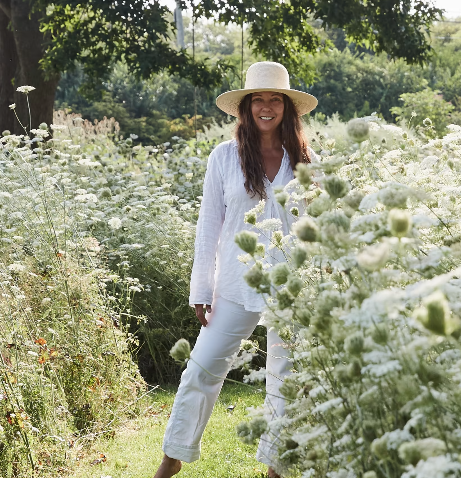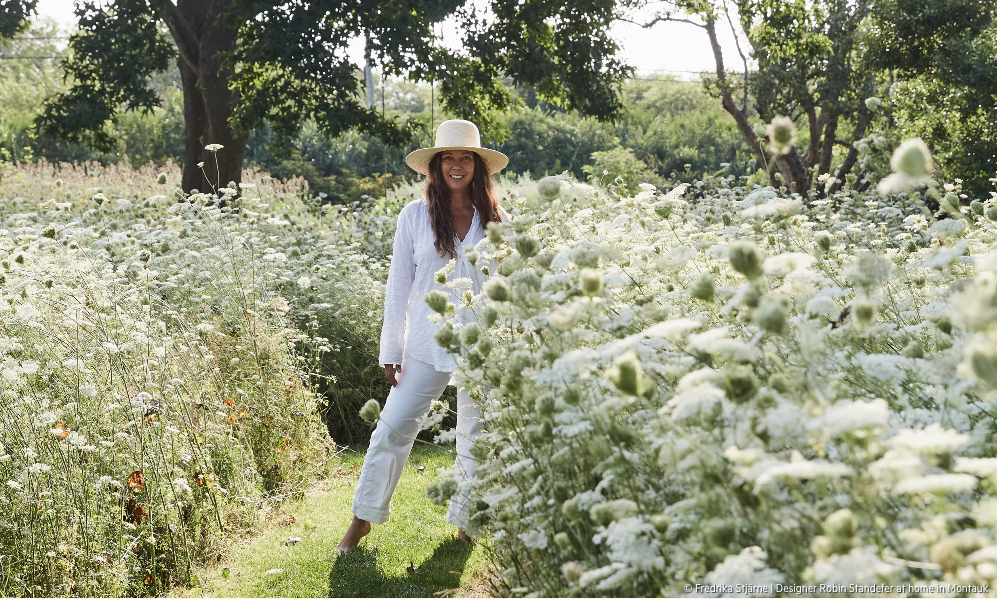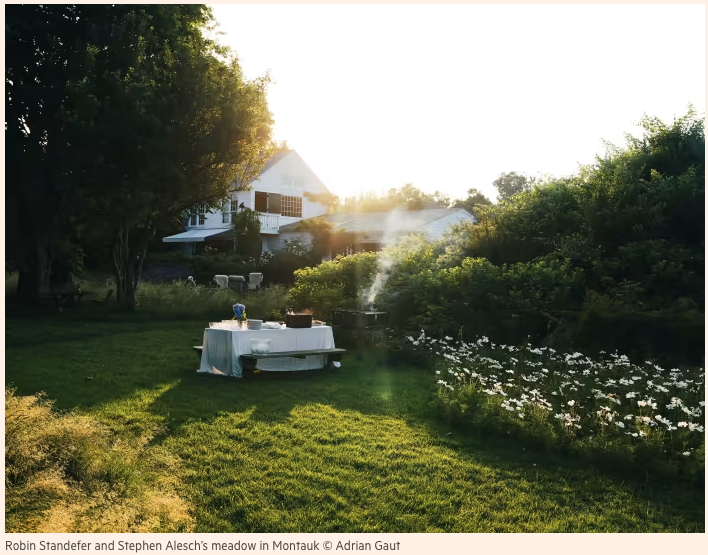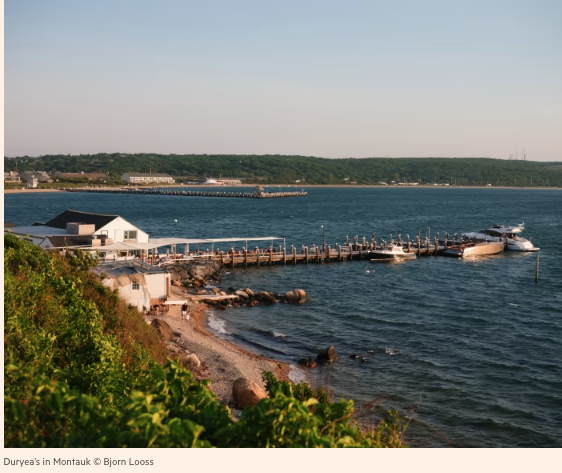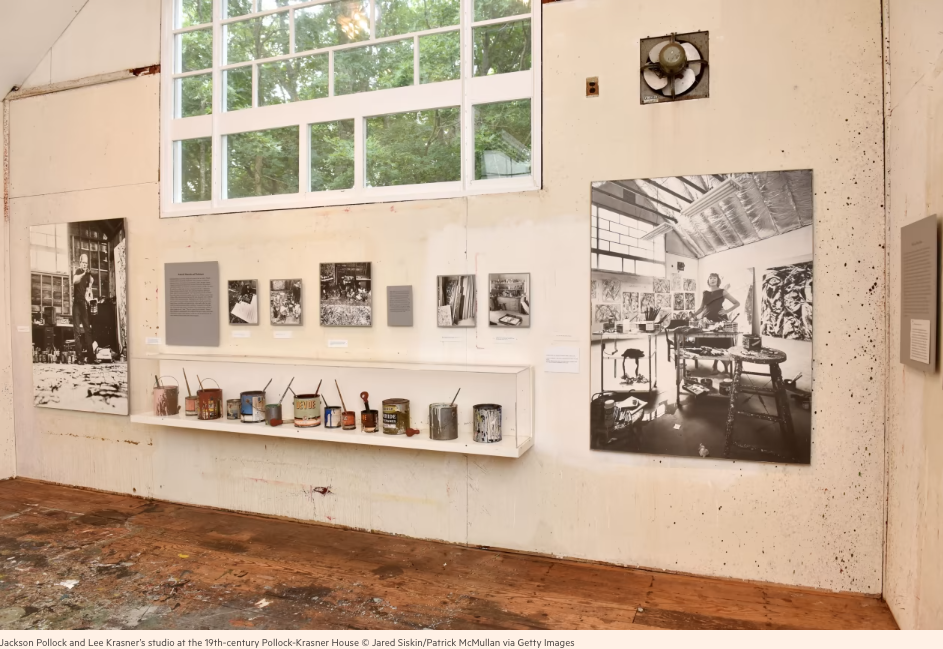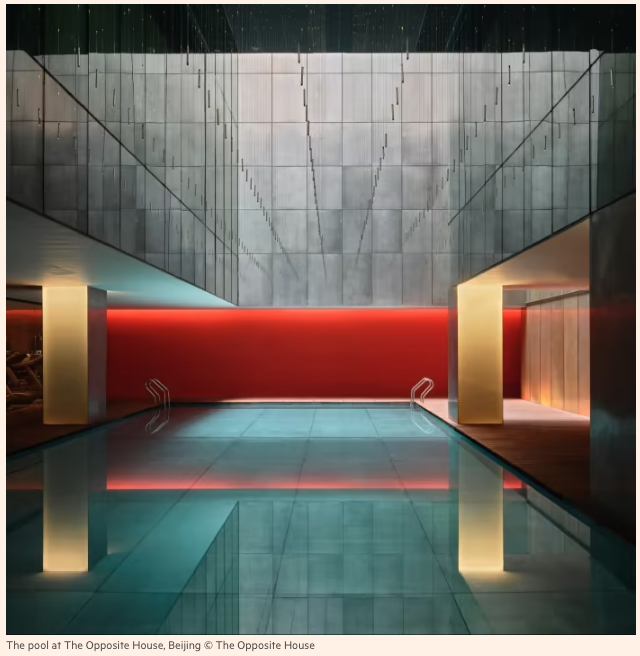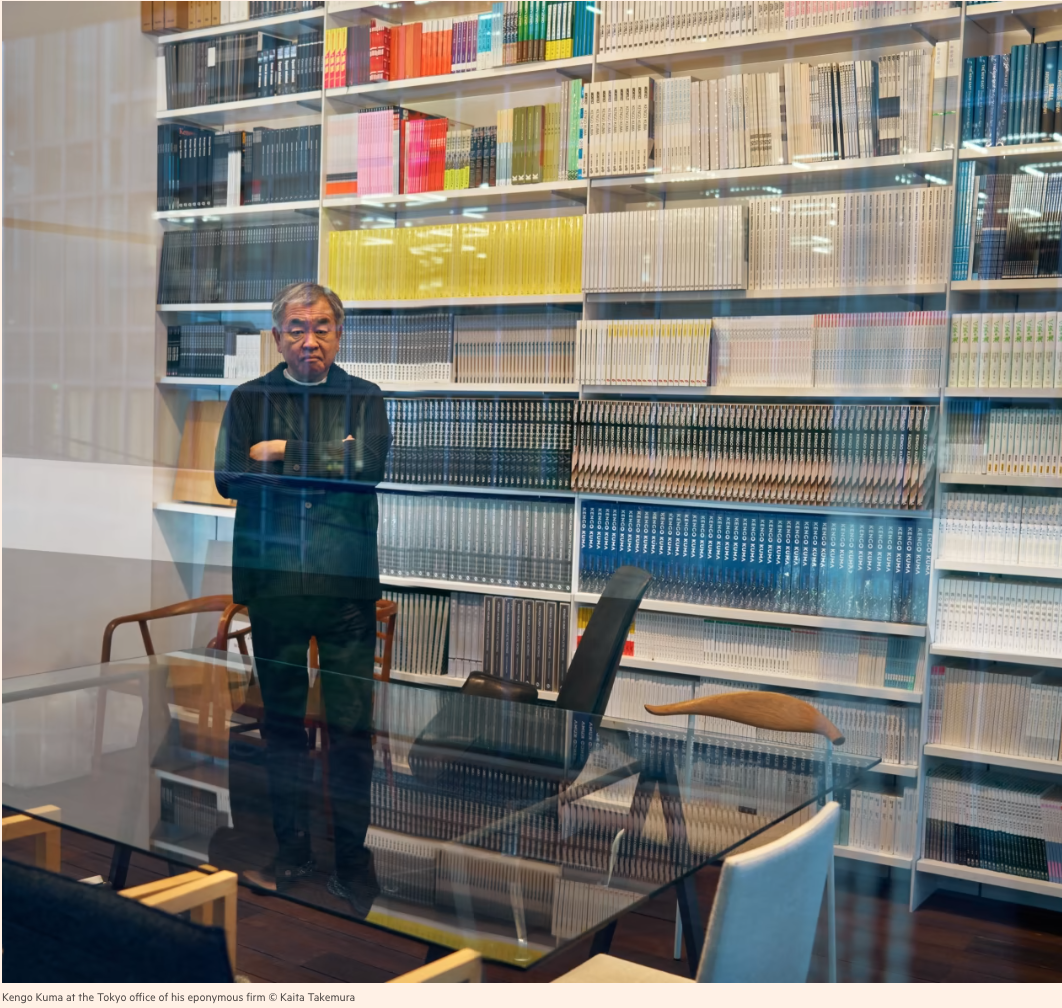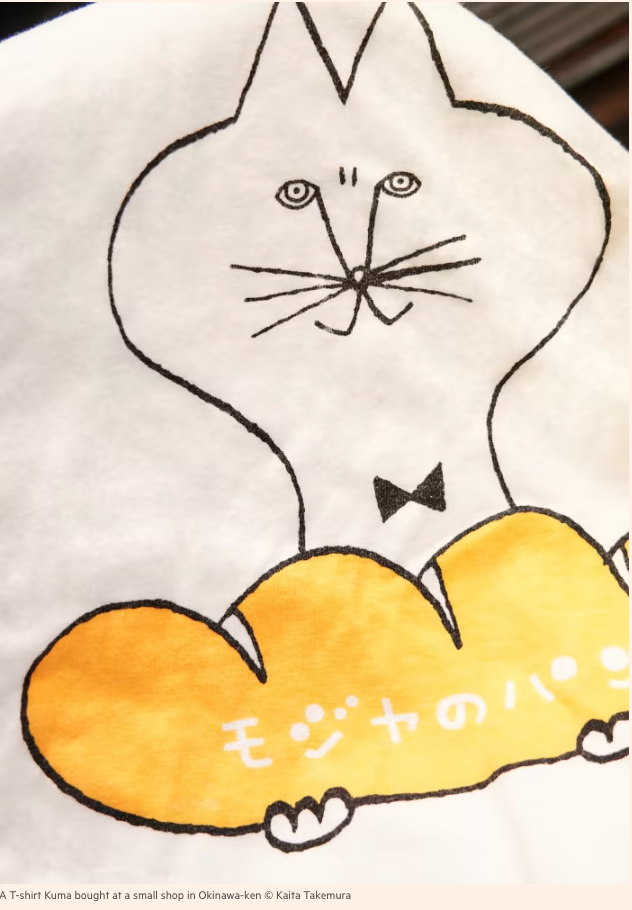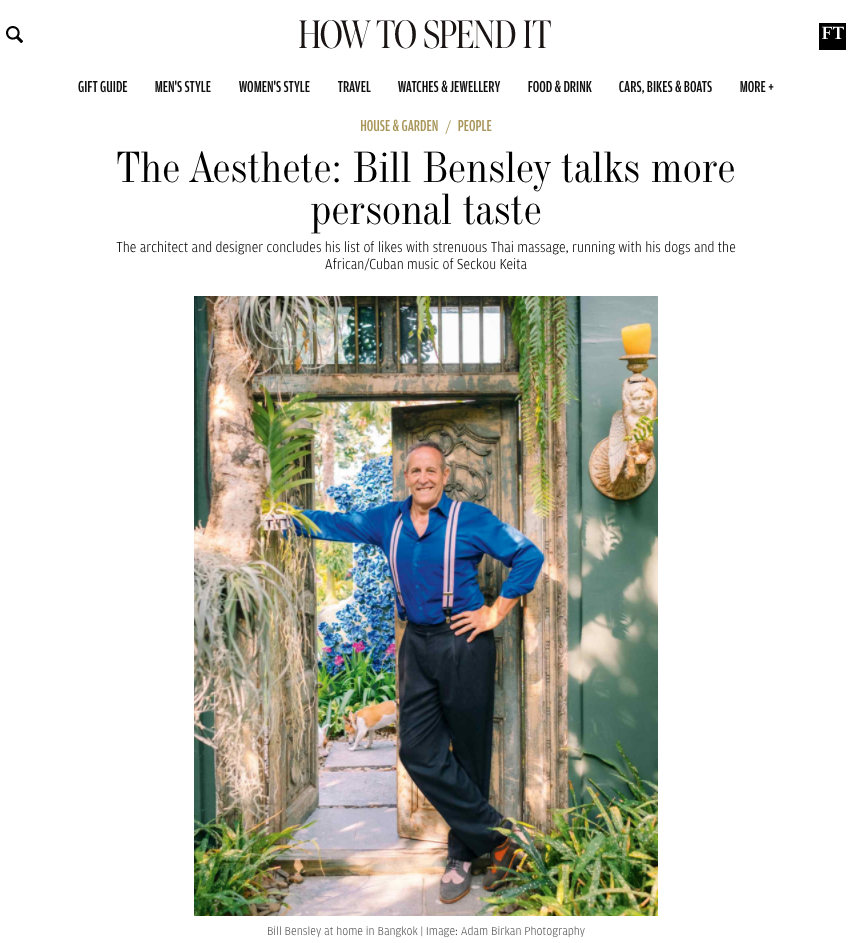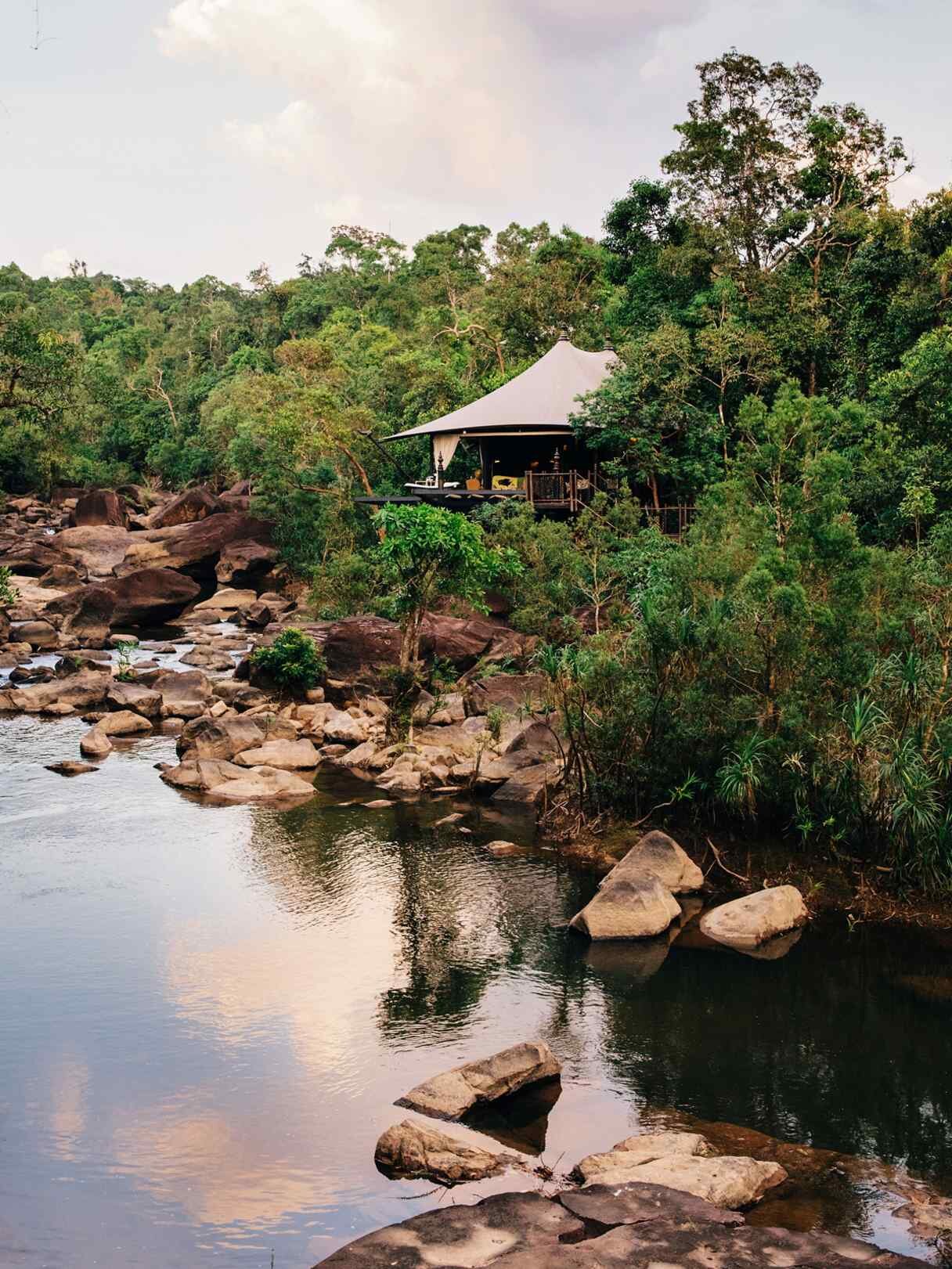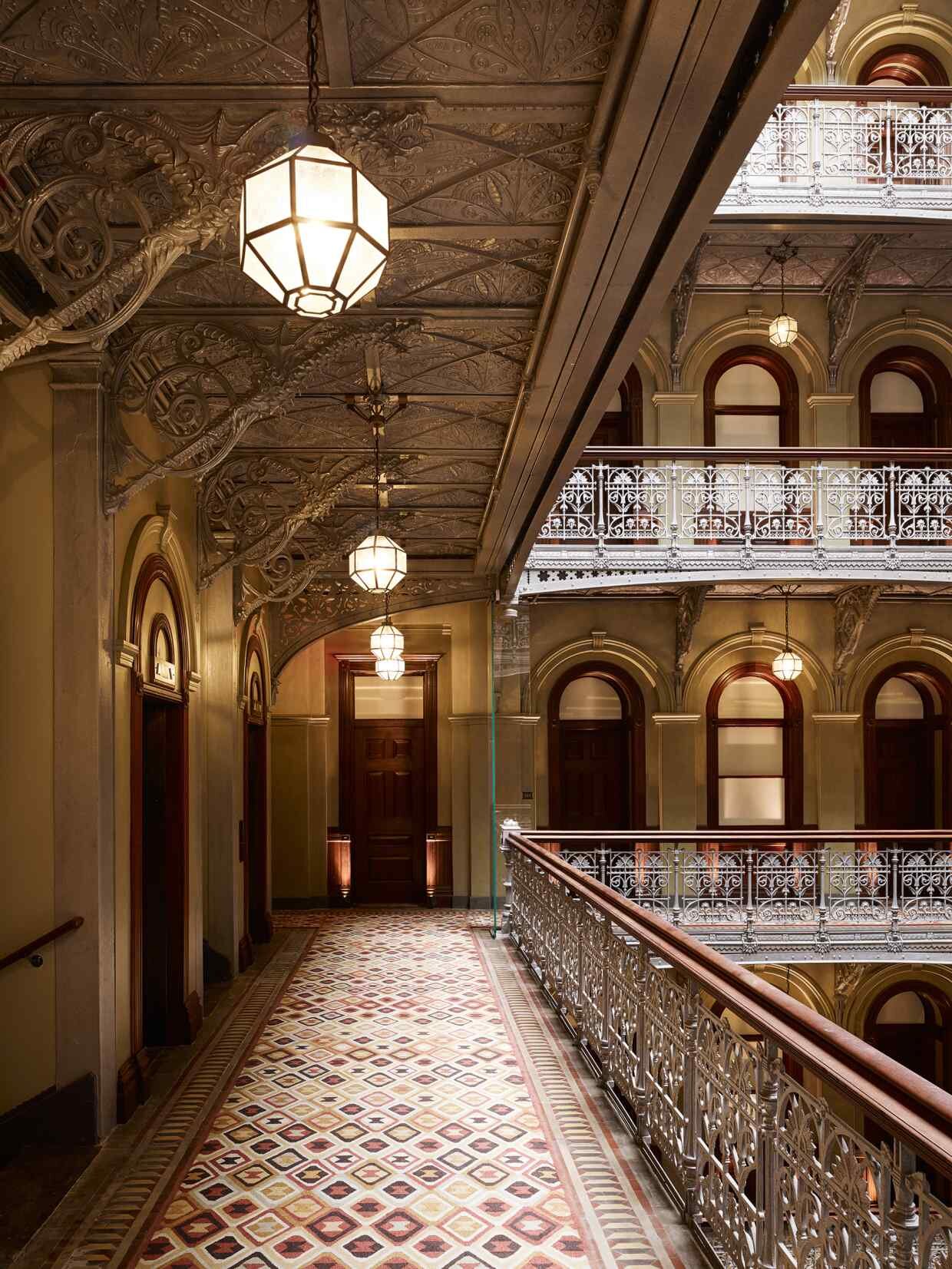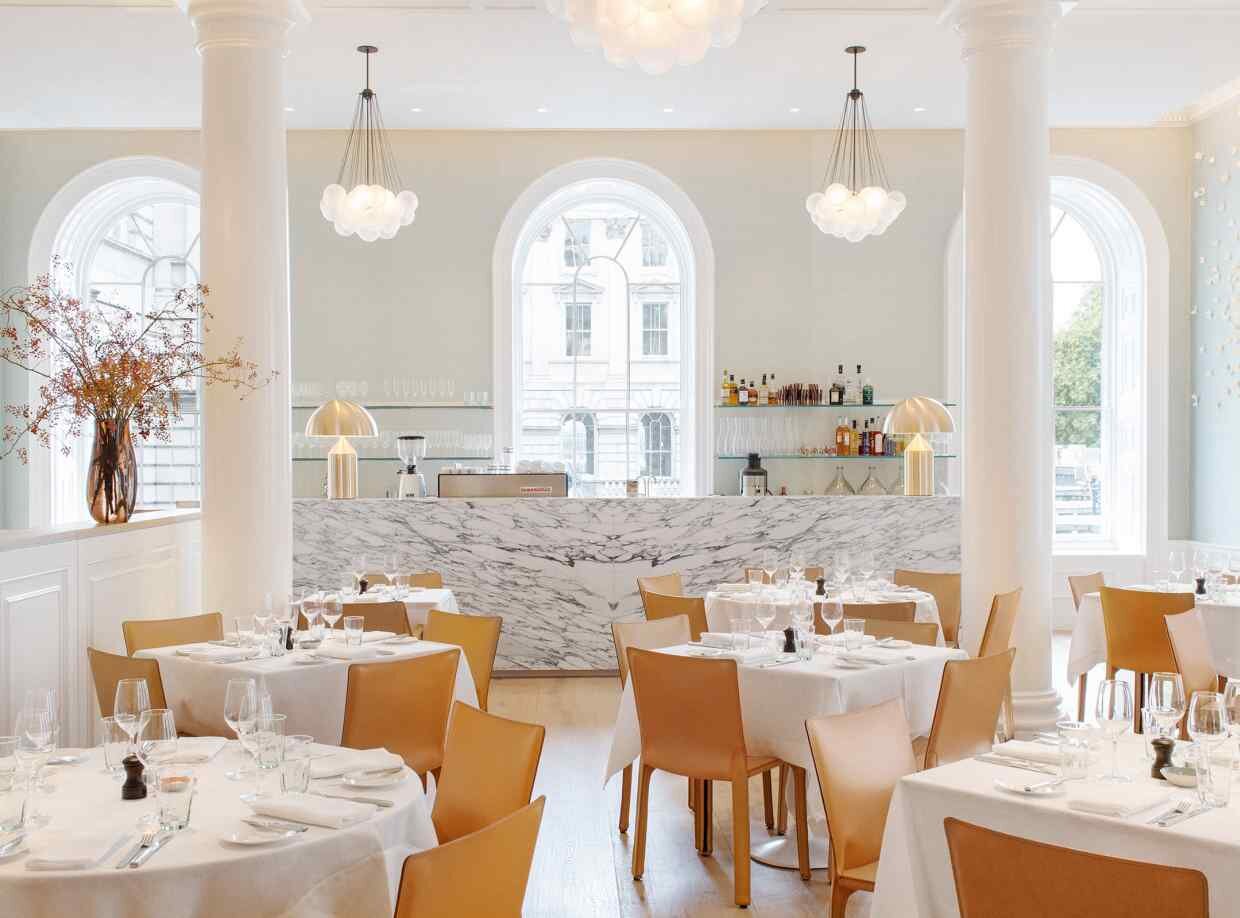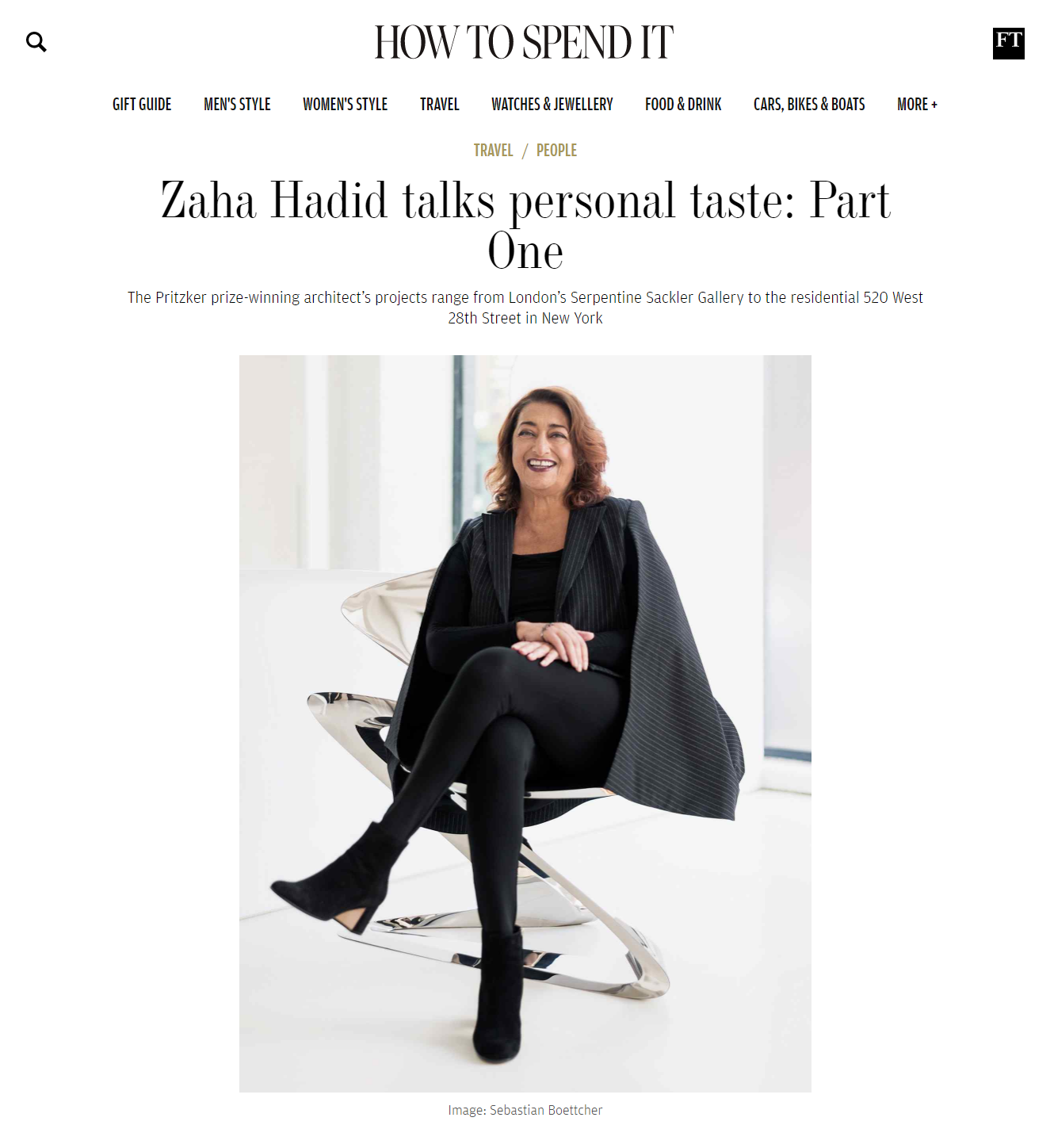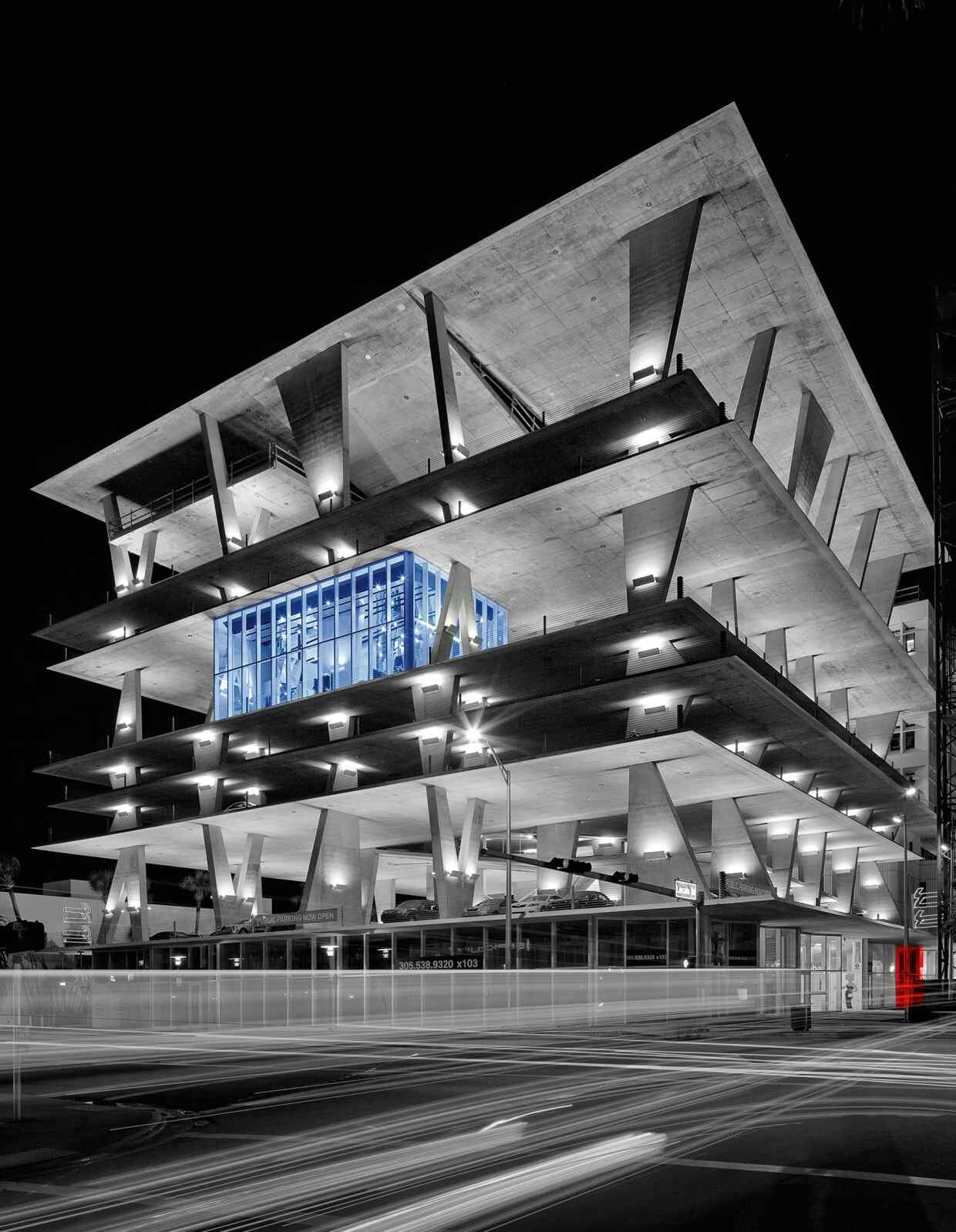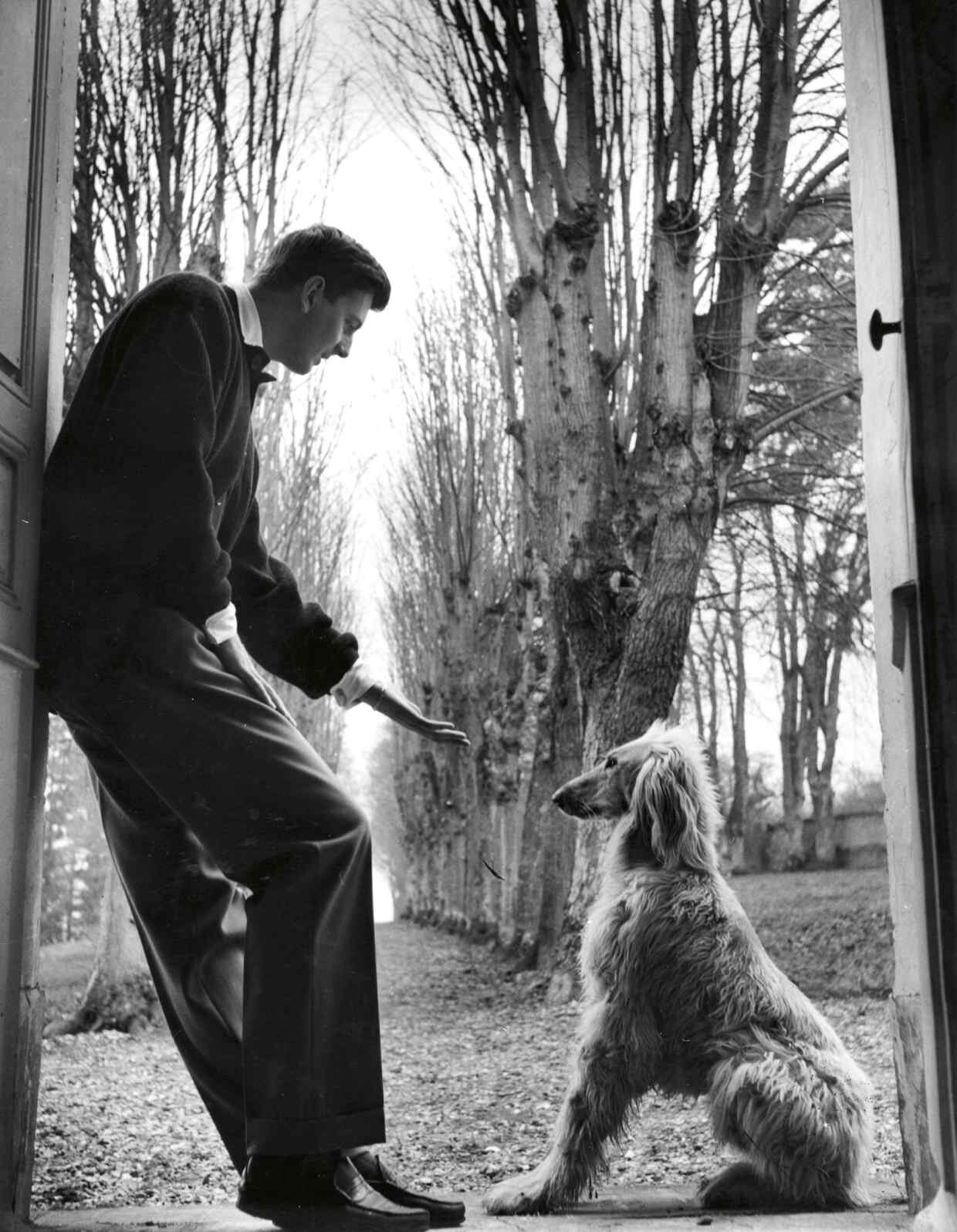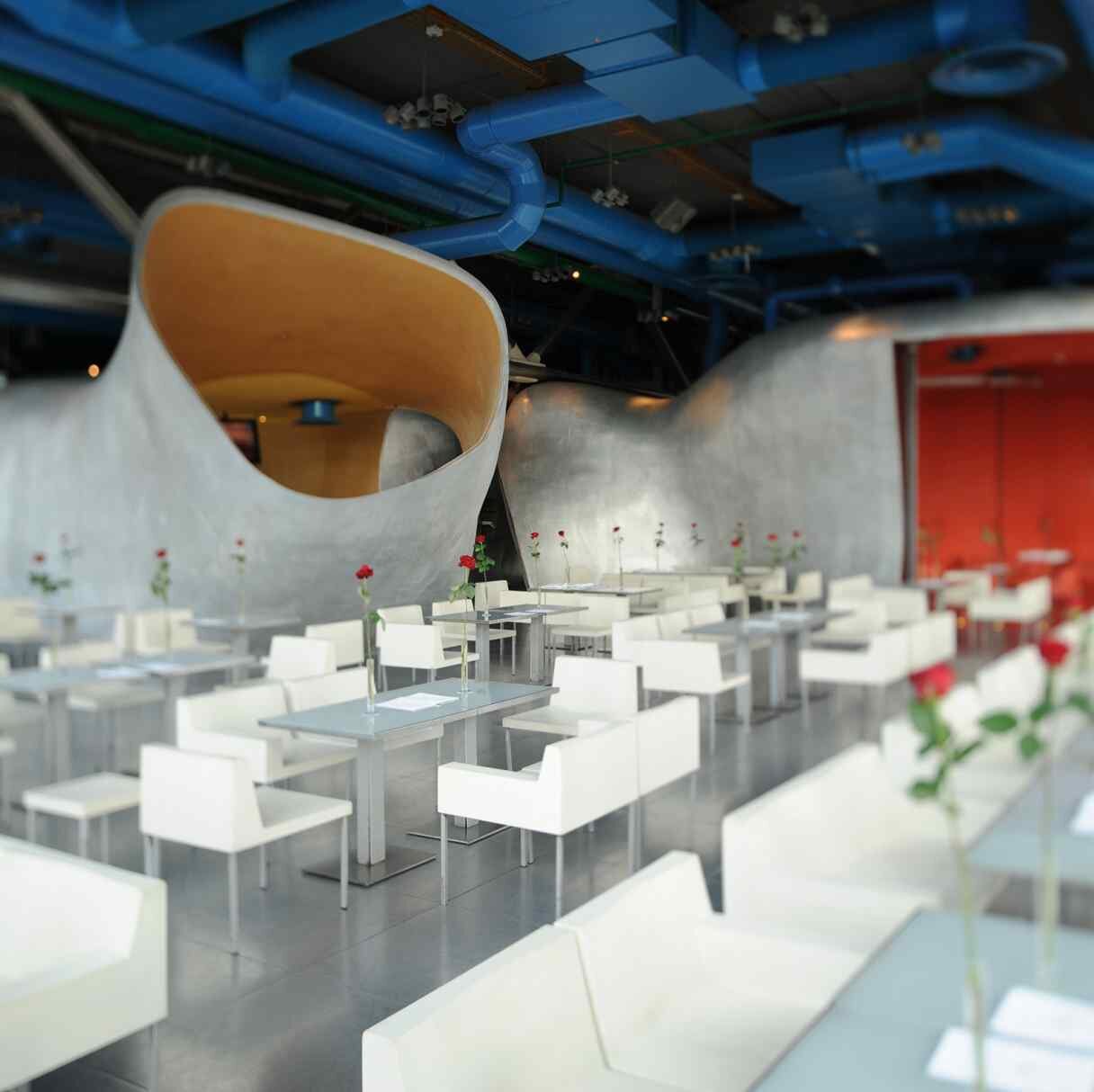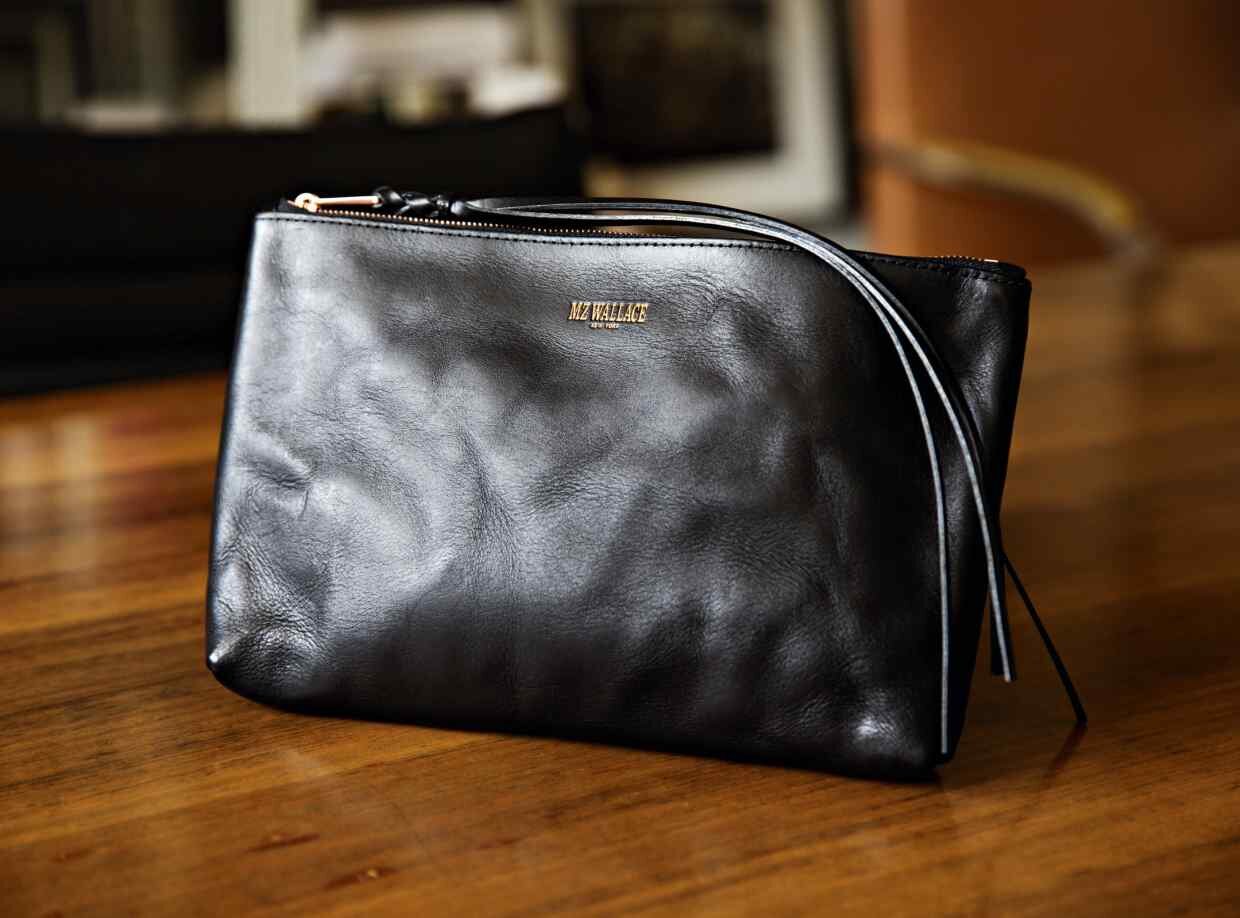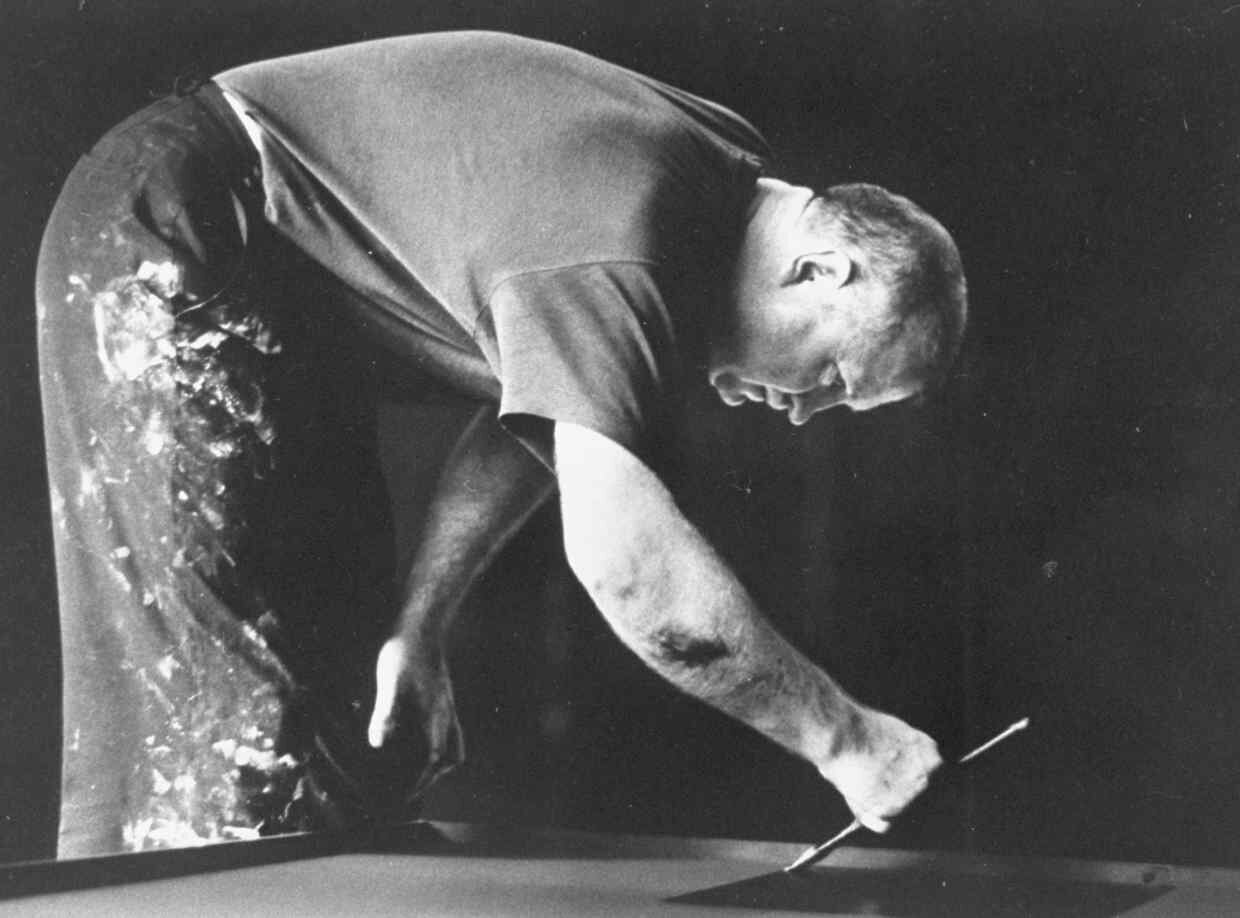Designer Robin Standefer’s insider guide to Montauk
Designer Robin Standefer’s insider guide to Montauk
The co-founder of design studio Roman and Williams on why it’s worth travelling to the tip of Long Island
The co-founder of design studio Roman and Williams on why it’s worth travelling to the tip of Long Island
Montauk has always been a place for artists and thinkers: Edward Albee, Stanford White, Andy Warhol and Mick Jagger all spent time here, each drawn to the dramatic landscape of “The End”, as the eastern tip of Long Island is known. I first came here as a teen, and when my husband and business partner Stephen [Alesch] and I needed a retreat from the city, it seemed like the perfect place. We have now called the area home for over 20 years and we love everything about it: the ocean, the farms, the fishing boats and the history. This is our spiritual home – the place that centres us – and it’s where we’ve developed ideas for everything from the British Galleries at The Met to homes for Gwyneth Paltrow and hotels for André Balazs. It’s also the place that has inspired our lighting and furniture lines and even our menus at the restaurant at our New York store RW Guild, because the produce and seafood here are so phenomenal.
Montauk offers two entirely different experiences just a few miles apart. There is the calm Long Island Sound on one side, where Sunset Beach and Gin Beach offer gentle swimming and walks, and the noisy Atlantic Ocean on the other, with its dramatic cliffs and surf breaks. People love to talk about the traffic getting to the Hamptons and beyond, so at peak times the train is a great option, as is the Hampton Jitney [a motorcoach company]. I love watching the landscape fade from dense to wild as you leave Amagansett behind and enter Montauk. There are no manicured lawns out
There are plenty of places to stay, from the hip and sexy Crow’s Nest by Sean McPherson of The Bowery Hotel, to the minimalist Marram hotel, which sits right on the beach and has yoga and biking. And Gurney’s is an old school institution that has the excellent Seawater Spa, and feels like a total escape. I like to get a morning coffee at Left Hand. For fish, Gosman’s Gourmet Fish Market is my go-to, and I’ll get up at 6am to buy tuna that’s just come off the boat. There’s also the seafood market Multi Aquaculture Systems, aka the Fish Farm. The place is scattered with buoys and nets and you can pick up incredible takeaway – they’ve got it all, especially local colour.
There is much less of a party scene out here than in the Hamptons. Duryea’s Lobster Deck – a seafood restaurant on the dock overlooking Fort Pond Bay – has a south of France vibe, and is perfect for a glass of rosé at sunset. Alimentari Beach on Montauk Highway has great coffee and pizzas that you can eat outside in the little plaza. To live like a local you need to surf and, if you’re lucky, you’ll get to surf with the harbour seals. Stop at Air + Speed Surf Shop to rent a board – they give lessons, too – or just to buy a cool T-shirt.
There are also great bike tracks and walks around the coast – much of it is state parks, like Shadmoor Park – as well as ferry rides to Block Island for whale watching. For the best views of the coast, visit the Montauk Point Lighthouse – the oldest in New York state. The 19th-century Pollock-Krasner House – once the home and studio of artists Jackson Pollock and Lee Krasner – is wonderful, too. The farmhouse is just as they left it in 1984, right down to the drips from Pollock’s paintings on the floors. A bit further on, in Water Mill, is the Parrish Art Museum. It was designed by Herzog and de Meuron and you can see works by artists such as Sol Lewitt and April Gornik, who have ties to the area.
The summer is high season, of course, and while places like Ditch Plains can be crowded, you can be blissfully alone and left just to collect rocks in spots like Camp Hero State Park – even in August. Autumn is spectacular. You can still surf and hike, the air is crisp and cool, and there is fantastic apple-picking. We always host a harvest dinner in late October. Winter feels very Scandinavian – there is lots of fog, and sometimes it snows. Our Reed candlesticks were inspired by the dried stems you see in Montauk in this bleak but beautiful season. Montauk is so environmentally protected that I don’t worry too much about it all changing, or the wild beauty of the gardens or the shape of the coastline deteriorating. I do, however, want it to remain a place for explorers, and I also want to see it stay balanced, because that’s what makes Montauk so cool.
Kengo Kuma: ‘I am not attached to objects at all’
Kengo Kuma: ‘I am not attached to objects at all’
But the Tokyo-based architect still loves tenuguis and his cat T-shirt
But the Tokyo-based architect still loves tenuguis and his cat T-shirt
My personal style signifiers are minimalist, comfortable clothing – black jackets, sometimes by Issey Miyake, and always T-shirts. My clothes are like my own designs: spare and simple.
The last thing I bought and loved was a Danish chair for my furniture collection. The design is human and intimate. I have Mies van der Rohe and Hans Wegner chairs; architects often like uniformity but I like to experiment with different styles.
The place that means a lot to me is The Opposite House in Beijing – although I am slightly biased as it’s my own design. It’s a hotel, but the use of natural materials such as wood and stone makes it comfortable and warm. It is an oasis. Everything is minimal – a stainless-steel pool, wooden water basins – so it feels serene and uncluttered.
The design that has most inspired my work is a set of black ceramic tiles that were given to me in China. These influenced my design for the China Academy of Art in Hangzhou, specifically the grey roof. I love the beauty of Chinese ceramics, and materials that are of a place.
The best book I’ve read in the past year is First Person Singular by my good friend Haruki Murakami. His novels have a sort of tunnel structure and I apply this same design philosophy to my buildings. We inspire each other.
My style icons are farmers. I like workwear and the simplicity of this local vernacular. My grandfather taught me how to grow vegetables and was a mentor to me. Another icon is Sen no Rikyu – a 16th-century Japanese tea master who raised the ritual to an art form.
The best gift I’ve given recently was a sketch, to a client, made on tenugui “kerchief” – a gift towel used to wrap presents. I like to sketch on tenuguis. They are applied with a special dyeing process and have a rough texture, but are nonetheless elegant.
And the best gift I’ve received is a huge load of vegetables from the mayor of the city of Sakai-shi in the Osaka prefecture. I am designing some small buildings for the community there, and as a thank you he gave me all kinds of fresh produce – aubergines, cucumbers, ginger – which were all irregularly shaped, not shiny like supermarket produce. They were a different kind of delicious.
The last music I downloaded was by Ryuichi Sakamoto, who worked on The Last Emperor. We are longtime friends and I have been influenced by his music. It remains very contemporary.
In my fridge you’ll always find Japanese sake, especially old sake from the Masuizumi label. They make two-year-old and five-year-old sakes that are full of unique flavour. You’ll also find genmai brown rice which has a rich, nutty flavour. My style icons are farmers. I like workwear and the simplicity of this local vernacular
The works of art that changed everything for me were Japanese gardens. These are, to me, more spectacular than any painting. Muso Kokushi was a 14th-century designer who has influenced my own work so much – his use of moss and stone was wild and stunningly beautiful. He is considered a “national Zen teacher”.
I’ve recently rediscovered funazushi, a type of fermented sushi that was popular before there was refrigeration. Some can’t eat it because of the smell, but I particularly like the crucian carp variety. You won’t find this in Tokyo, but rather in seaside prefectures such as Toyama-ken and Fukui-ken.
The one artist whose work I would collect if I could isn’t so much an artist as an art form: Chinese and Japanese calligraphy. These scrolls are impressive; I love the contrast of rice paper and ink.
The grooming staple I’m never without is Hatomugi rice soap. I have tried many other kinds but this is the best. It is made with seeds and is very cleansing.
An indulgence I would never forgo is… Nothing. My tastes are simple.
An object I would never part with is… Nothing. I am not attached to objects at all.
My favourite room in my house is my terrace in Tokyo. I love outdoor spaces and I have a collection here of all kinds of plants. Every morning small birds come to feed and it’s a serene setting. In another life, I would have been a veterinarian. I adore animals, particularly cats.
The best bit of advice I’ve ever received was from a university professor who said: “Don’t refuse anything, accept it all.” He encouraged me to be open to all new things – places, people, foods. We travelled to the Sahara together and it was so eye-opening. A university professor told me: “Don’t refuse anything, accept it all”
The best souvenir I’ve brought home is an inexpensive, classic Chinese shelf that I purchased in a nondescript shop in Beijing. It’s now in my living room and holds all of my souvenirs. I travel the world – we have projects in more than 30 countries – and so my taste in souvenirs is eclectic.
I have a collection of rice papers from all over Asia. I have many different textures, all in different shades of white, and each relates to a specific place. I use them for making pictures with pen and ink.
The last item of clothing I added to my wardrobe was a T-shirt with an image of a cat that I got in a small shop in Okinawa-ken. I love cats and quirky things that aren’t mass-produced, and this T-shirt is fun and comfortable.
The things I couldn’t do without are pencils. I sketch whenever an idea strikes so I carry pencils with me everywhere, in all of my pockets. I don’t much care what brand, just so long as I have a piece of paper and a pencil on hand…
The buildings that changed everything for me are by Frank Lloyd Wright. He came to Japan and found the essence of our culture in a way that we couldn’t. This translated to his buildings, in particular Fallingwater, the Pennsylvanian house that he designed in the 1930s. It has literally made me weep.
Tadao Ando: ‘We need unbreakable passion to survive the unknown future’
The Pritzker Prize-winning architect cherishes his Ettore Sottsass typewriter, English Breakfast tea — and uncertainty
The Pritzker Prize-winning architect cherishes his Ettore Sottsass typewriter, English Breakfast tea — and uncertainty
Christina Ohly Evans
My personal style signifier is a black jacket with a raised collar by Issey Miyake. Mr Miyake has a consistent philosophy that permeates his fashion, personality and lifestyle. His designs are not only masterful but embrace a productive sense of tension. I treat this apparel as my armour to enter the battlefield that is architecture.
The last thing I bought and loved was a Le Corbusier monograph, Oeuvre Complète Volume 6: 1952-1957. This edition highlights projects such as the beginning of Chandigarh and the completion of Notre-Dame du Haut – the Ronchamp chapel. As humans, we lose our speed and energy as our minds and bodies age. However, in his mid-40s, Le Corbusier developed most as an architect. His work accelerated in both production and innovation.
The Bourse de Commerce-Pinault Collection has now opened in Paris © Tadao Ando Architect & Associates, Niney et Marca Architectes, Agence Pierre-Antoine Gatier. Photograph: Maxime Tétard, Studio Les Graphiquants, Paris
The place I can’t wait to return to is Paris. I look forward to visiting the Hôtel d’Angleterre as I’ve stayed there since the start of my career. And I long to walk around the Bourse de Commerce gallery, which I designed, now that it is opening. I’m excited to see the spectacular fresco restoration as well as artworks that have been specially commissioned for the space.
An indulgence I would never forgo is being able to live and walk on my own two feet. In the past 10 years, I have had two major surgeries to remove five of my organs, including my pancreas. I am so happy to be able to continue working.
Artwork by Damien Hirst hanging in Ando’s studio © Yasuyuki Takagi
A radio by Italian architect and designer Marco Zanuso © Yasuyuki Takagi
The best book I’ve read this year is Botchan by Natsume Soseki, which in its beauty and depth is the origin of modern Japanese literature. I picked it up again this year for the first time in decades. It encapsulates the spirit of humanity, and like all great literature offers varying interpretations depending on what stage of life you are at when you read it.
In my fridge you’ll always find empty space. I have toast and English Breakfast tea first thing. After that there are a number of great restaurants in the Umeda area of Osaka, where I live. I like a simple udon from one of the bars near my studio. I’m not particularly picky, and while I am fine with any food, I do like to eat quickly and I prefer that it be healthy. I have coffee or tea with my lunch – I drink a few cups throughout the day – and I never drink alcohol.
The work of art that changed everything is the collective work produced by the Gutai Group of Japan. They were extraordinarily prolific artists in the mid-20th century and have been significant influences in my life. From them, I learned the importance of thinking about things radically from their origins, and about materiality.
An external view of Ando’s Osaka studio © Yasuyuki Takagi
Ando collects Ice-Watches and fountain pens
His typewriter by Ettore Sottsass © Yasuyuki Takagi (2)
I have a collection of fountain pens, many of which I have received as gifts over the years. I don’t necessarily have an interest in the act of collecting so much as I like designed objects to be simple, robust, and to balance cost, aesthetics and functionality. My favourite is a red Montblanc fountain pen designed by Marc Newson. An ingenious magnet mechanism allows the logo of the pen and the cap to perfectly align when it is closed. I also have what almost amounts to a collection of Ice-Watches in different colours. I rotate them depending on the day.
The best gift I’ve given recently was when I designed and funded the Nakanoshima Children’s Book Forest, which opened last summer. I see this library as a gift from the adults to the children of Osaka.
Château La Coste rosé, given to Ando by Paddy McKillen © Yasuyuki Takagi
And the best gift I’ve received recently is a bottle of rosé from Château La Coste. It came from my client and friend, Paddy McKillen. Its pale amber colour seems to reflect the spirit of the architecture we collaborated on together. Whenever I see the bottle, I think back to the wonderful memories of working alongside him in the south of France and London.
The design that intrigues me the most is that hidden in anything we use habitually in our daily lives. A great master architect, Seiichi Shirai, once said he found beauty in the ordinary design, shape and colour of tofu, an everyday staple of the Japanese people.
My favourite view in the world is of cherry blossom trees lining the Dojima River in Nakanoshima, a large body of water running through the middle of Osaka. About 6,000 trees bloom in unison across a 7.5km-long stretch of river. This natural spectacle was created by extending the original tree-lined path of less than a kilometre. I launched a tree-planting initiative over 15 years ago to beautify the area. My hope was to create a new urban axis within Osaka utilising the power of of nature. It is a pleasure to see the results of this work every spring.
Ando’s Osaka studio © Yasuyuki Takagi
The last item of clothing I added to my wardrobe was a black raincoat from Mackintosh in London. I like how light and comfortable it is, and it works well for travel. £995
The last music I downloaded was a song that Bono recorded just for the Nakanoshima Children’s Book Forest. He sang it beautifully, improvising the lyrics and the melody on the spot. I recently added it to my playlist, but it hasn’t been publicly released.
An object I would never part with is a typewriter designed by Ettore Sottsass that I found some 50 years ago when I first started my practice. I had wanted it since my 20s, and in my 30s I was finally able to get my hands on one. This object is inextricably connected with my memories of my early career, when I was running headfirst into an unpredictable future.
My favourite room is my studio, which is near my house and where I spend most of my days. I feel most at home when I’m working. This quadruple-height space, which is filled with light and books, gives me great energy.
A boxing glove signed by heavyweight champion Evander Holyfield and gifted to Ando
he last thing Ando bought and loved: a Le Corbusier monograph © Yasuyuki Takagi
A portrait of Ando by Saori Zelnik © Yasuyuki Takagi
Right now, I’m planning a large national art museum in Tashkent, Uzbekistan. I’m also working on a modest seaside gallery of less than 20sq m next to a provincial Japanese city. It invigorates me to simultaneously take on such wildly different projects.
A recent find is uncertainty. I’ve been thinking about how none of us has any idea what will unfold in the future. One year ago, I could not imagine that the world would change so much because of this pandemic. We need unbreakable passion to survive the unknown future.
If I weren’t doing what I do, I would be a designer or a craftsman in another field. When I was younger, I got into the world of contemporary sculpture and product design, but I also remember having a passion for watching the carpenter’s daily progress renovating the wooden house I lived in. I think I was always going to be involved in the business of creating things.
My favourite architectural site is the skyline of Manhattan, one of the great masterpieces of the 20th century. If I had to narrow it down even further, I would say the art deco skyscrapers, especially the Chrysler Building.
The one artist whose work I would collect if I could is the work of Pablo Picasso. He explored the malleable possibilities of formal expression and laid the foundation for the world of contemporary art. It would be wonderful to gather all his creations in a single place to see his comprehensive body of work.
The Aesthete: Bill Bensley talks more personal taste
The architect and designer concludes his list of likes with strenuous Thai massage, running with his dogs and the African/Cuban music of Seckou Keita
The architect and designer concludes his list of likes with strenuous Thai massage, running with his dogs and the African/Cuban music of Seckou Keita
My style icon is the English/Caribbean artist Kate Spencer. She divides her time between St Kitts and Sicily, but she often comes to Bangkok. I love her wild way of dressing – she even paints her own clothes – and her strong, vivacious spirit.
The last thing I bought and loved was my Jack Russell terrier Frank – named after Frank Sinatra. He is my seventh Jack Russell and he’s just enormous. He’s a real swimmer, whether it is in the rivers outside Bangkok, or in our pool.
Artist Kate Spencer | Image: Tina Papies/SceneKitts Photography
The best gift I’ve received recently is the AHEAD Asia 2019 Outstanding Contribution Award for Hospitality and Design. It’s a lifetime achievement award and voted on by my peers, so that feels particularly good.
In my fridge you’ll always find fresh fish, chillies and watermelon. We make a spicy Thai fish soup almost daily, so we always have the first two basic ingredients on hand. The watermelon is for breakfast, and no matter how old I get, it always reminds me of childhood summers.
The indulgence I would never forgo is strenuous Thai massage. Our masseuse comes to the house every night to give me a rigorous stretch from limb to limb. It’s kind of like forced yoga, but it keeps me healthy.
The last thing I added to my wardrobe was a pair of denim overalls I found in a local market – I like their utilitarian simplicity. I have an upcoming photo shoot and I am going to do the portrait in front of a giant picture of a forest. I plan to be holding an axe, and the overalls will add to the whole Paul Bunyan effect.
Shinta Mani Wild nature sanctuary in Cambodia
The one artist whose work I would collect if I could is Picasso. I love his early works in particular – in fact, I’ll take all the Blue Period. His work is inspirational and dreamy and it certainly plays into my own painting.
An object I would never part with is hard to imagine as I couldn’t care less about possessions – but I would never part with my husband of 30 years.
Kitchen Confidential by Anthony Bourdain
My favourite room in my house is the veranda because it is the heart of our home. It’s really the magic sweet spot where the beauty of the flowering gardens outside meets the serene interior. We have a table out there that seats six people and it’s just a lovely space, full of orchids, candles and ferns.
If I had to limit my shopping to one neighbourhood in one city, I’d choose Chiang Mai because it is full of all kinds of wonderful stores that sell Burmese, Indian and Chinese antiques. Golden Triangle is one of my favourite places where I buy hundreds of pieces – desks, tables – at a time, and also De-Siam for furniture, decorative objects, carved marble and lighting. I recently bought 400 Indian wooden moulds at this shop. I’m not sure where these will go; I tend to buy first and think later. Prempracha’s Collection is another excellent resource. De-Siam, 132 Moo 1, Chiang Mai-Hod Road, Hang Dong, Chiang Mai 50230 (+6653-441 254; desiam-antiques.com). Golden Triangle, 82 Moo 1 Chiang Mai-Hod Road, A Hang Dong, Chiang Mai 50230 (+6653-434 700; goldentriangle.co.th). Prempracha’s Collection, 224 M3, Chiang Mai-Sankampang Road, T Tonpao, A Sankampang Chiang Mai 50130 (+6653-338 540; prempracha.com).
One of Bensley’s own paintings | Image: Adam Birkan Photography
The best book I have read in the past year is Kitchen Confidential by the late chef, writer and TV personality Anthony Bourdain. He was a seriously talented person and his behind-the-scenes writing about the world of restaurant kitchens is fascinating.
The best gift I’ve given recently was a piece of land to the Cambodian people. It’s roughly the size of Central Park and is an important conservation project. Called Shinta Mani Wild, it is a private nature sanctuary and we’ve built 15 little tents perched over the water that are rented out to help support our sustainability and anti-poaching efforts. From $1,900 per night (minimum three-night stay); shintamani.com/wild.php.
My failsafe jet lag cure is running – though it must be outside, as sunlight is key. And ideally, three hours of Thai massage to increase my energy flow.
The people I rely on for personal wellbeing are not people, but rather my five dogs. They are the best trainers as they demand a five to 10km run every day around sunset and I take them to the muddy rivers and marshes outside the city. Our cook Tuk, who was my dad’s nurse, also contributes greatly to my overall health. She is our house “mum”.
The last music I downloaded was Senegalese 22 Strings by artist Seckou Keita. This African/Cuban music is hypnotic; sometimes vocal, sometimes with jazz notes. I like Keita’s soothing sounds around the house, especially when I am painting.
The grooming product I’m never without is a generic bar of soap. I literally use it to wash, shampoo, for everything – I don’t groom.
If I weren’t doing what I’m doing, I would be a painter. I just took it up about a year ago and now I am obsessed. It’s much like fishing – I get into a happy, relaxed place when I paint. I love expressing myself through acrylics and watercolours and am particularly focused on large-scale portraiture, which is a difficult subject matter, so I love it the most.
The Aesthete: Pierre Yovanovitch talks personal taste
The interior architect designs art-filled, ultra-refined yet sensuous homes and retail and gallery spaces for global clients such as Kering
The interior architect designs art-filled, ultra-refined yet sensuous homes and retail and gallery spaces for global clients such as Kering
Pierre Yovanovitch at home in Paris | Image: Emmanuel Fradin
My personal style signifiers are my shoes by Pierre Hardy, some of which reference the work of major artists, and my mostly Dries Van Noten wardrobe. I’m a low-key person, so my clothing and accessories tend to be fashionable yet classic. My Mylon glasses by Mykita – the first item I put on in the morning – are another signature of mine: they’re ultra-light and the matte finish is in keeping with my simple aesthetic. driesvannoten.be. mykita.com. pierrehardy.com.
Pierre Hardy leather Oxfords, €795
The last thing I bought and loved was a ceramic vase by the American artist Karin Gulbran. It’s a very abstract, minimal, light-blue and brown vessel that works with the neutral colour palette I love. From $13,000; Pierre Marie Giraud, 7 Rue de Praetere, 1050 Brussels (+322-503 0351; pierremariegiraud.com).
And the thing I’m eyeing next is a “nest” seat by the South African designer Porky Hefer. His one-of-a-kind pieces are made from cane and rattan, and I’d love one for an outdoor space at my château in Provence; it would make the perfect reading nook. Fallen Nest, £11,000; animal-farm.co.za.
Ceramic vase by Karin Gulbran, pieces from $13,000
The last thing I added to my wardrobe was a half-length wool coat from Acne that I bought in New York. It’s stylish, simple and in a rich navy blue. As I get older, I think blue clothing is generally much better than black. £900; acnestudios.com.
Fallen Nest seat by Porky Hefer, £11,000
The best gift I’ve received recently was an intricate “eye” embroidery by Lesage Intérieurs, given to me by Jean-François Lesage, grandson of the maison’s founder. This astonishing piece was commissioned for L’Erotomanie de Mlle Oops, the exhibition I conceived for the Toulon Design Parade last summer. It now hangs in my office. lesageinterieurs.com.
Cotton- and wool-thread, soft-wire and chenille “eye” embroidery by Lesage Intérieurs | Image: Sudakar
The site that inspires me is the Brother Klaus Field Chapel, in Mechernich, Germany, by the architect Peter Zumthor. Set in a remote field, this striking art chapel features a poured-concrete exterior and a beautiful triangle-shaped silver door. There is no roof, so when it rains, the water is collected inside, which adds to the spiritual atmosphere. Iversheimer Strasse, 53894 Mechernich (feldkapelle.de).
Brother Klaus Field Chapel, Mechernich
The people I rely on for personal grooming are Philippe Campana and his wife, Geneviève, at Louis G, a hidden hair salon in Paris’s 7th arrondissement. It’s a very discreet, no-fuss place – no music or anything too trendy. It still has the original 1970s feel and I like the very professional stylists who keep my longish hair that way. From €60; 4 Rue du Bourgogne, 75007 Paris (+331-4551 3039).
Ligne Blanche porcelain JM Basquiat Glenn tray
My favourite room in my house is my bedroom – spacious and sparsely decorated but still warm and inviting. In the 70sq m space there is only a large bed and two pieces of meditative art, along with lots of rough-hewn oak and natural light.
If I had to limit my shopping to one neighbourhood in one city, I’d choose the 1st arrondissement in Paris. Galerie Eric Philippe is wonderful for Scandinavian design, while Ligne Blanche is great for tabletop finds – especially the plates. The owner is passionate about art and does collaborations with the estates of Andy Warhol, Jean-Michel Basquiat and many others. Hermès is always a favourite for chic clothes and scarves. After all that shopping, I like Cibus – a tiny, really authentic Italian restaurant that serves the best organic, seasonal dishes, such as homemade linguine with wild mushrooms, or octopus with haricots verts. Cibus, 5 Rue Molière, 75001 (+331-4261 5019). Galerie Eric Philippe, 25 Galerie Véro-Dodat, 75001 (+331-4221 1793; ericphilippe.com). Hermès, 24 Rue du Faubourg Saint-Honoré, 75008 (+331-4017 4600; hermes.com). Ligne Blanche, 18 Galerie Véro-Dodat, 75001 (+331-4482 5748; ligneblancheparis.com).
My favourite websites are all very visual. I often look at Jacksons, of Stockholm, for furnishings and Galerie Thaddaeus Ropac for inspiration. jacksons.se. ropac.net.
The Aesthete: Jean Nouvel talks personal taste
The Pritzker Prize-winning architect’s projects include the Arab World Institute, the Louvre Abu Dhabi and the forthcoming 53W53 in New York
The Pritzker Prize-winning architect’s projects include the Arab World Institute, the Louvre Abu Dhabi and the forthcoming 53W53 in New York
Jean Nouvel | Image: Emmanuel Fradin
My personal style signifier is my Yohji Yamamoto black clothing – dress shirts, traditionally cut trousers and a jacket – which I wear for three seasons of the year. I switch to white versions from June to September, because I’m typically in the south of France and more comfortable in lighter clothes. 14/15 Conduit St, London W1 (020-7491 4129; yohjiyamamoto.co.jp).
The last thing I bought and loved was a very minimal black Swatch watch, the Once Again GB743. I don’t buy much, but when I do, it is something functional, simple and made of practical materials. This watch is basic: there’s no messing around. £32; swatch.com.
Massachusetts Museum of Contemporary Art
And the thing I’m eyeing next is a book by one of my idols, Edgar Morin. I love this French philosopher/sociologist’s writing, and I am looking forward to reading The Cinema, or The Imaginary Man, which delves into imagination and human nature. $19.95; University of Minnesota Press.
An unforgettable place I’ve travelled to in the past year is Williamstown, Massachusetts. The landscape in autumn in the Berkshire mountains, with the brilliant red and orange foliage, was the most beautiful I’ve seen in my life. The Massachusetts Museum of Contemporary Art in nearby North Adams is an exceptional museum with incredible works by Sol LeWitt, and the Clark Art Institute is another world-class institution. Clark Art Institute, 225 South St, Williamstown, MA 01267 (+1413-458 2303; clarkart.edu). MASS MoCA, 87 Marshall St, North Adams, MA 01247 (+1413-662 2111; massmoca.org).
The best gift I’ve given recently was 96 bottles of wine to my father for his 96th birthday. I always give him wine and this year it was Château d’Yquem – one of his favourites. yquem.fr.
And the best one I’ve received was a beautiful original drawing by Claude Parent, from his widow Naad.
From left: Swatch Once Again GB743 watch, £32. Château d’Yquem, one of the wines Nouvel gave his father for his birthday. Eau des Baux by L’Occitane, £46 for 100ml. Nouvel’s Fedora by Motsch for Hermès | Image: Emmanuel Fradin
A recent “find” is Cartet, a French restaurant near Place de la République. It is like a museum of classic cuisine with specialities such as duck à l’orange and veal chops garnished with morels. With madeleines, chocolate mousse and tarte au citron all placed before you at the end of the meal, dining here is a bit of a wonderful disaster. 62 Rue de Malte, 75011 Paris (+331-4805 1765).
In my fridge you’ll always find foie gras from my home town of Fumel, good wine, chocolate, fruit and cheese, including comté, Roquefort, camembert and chèvre.
The Cinema, or the Imaginary Man by Edgar Morin
My favourite room in my house is my TV room. I am a huge fan of football and rugby, and I love to wash my brain by watching sport. The room is all black and features one of the same beautiful steel stars I used in the dome of the Louvre in Abu Dhabi. louvreabudhabi.ae.
The last thing I added to my wardrobe was a black fedora by Motsch for Hermès, which was steamed to fit my head perfectly. It is highly practical. hermes.com.
The grooming product I’m never without is Eau des Baux by L’Occitane. It has a very specific scent of cypress, which reminds me of the south of France. £46 for 100ml; loccitane.com.
If I didn’t live in Paris, the city I would live in is Nice. I love the setting: it’s on the sea, with beautiful light, and the climate is perfect. I am particularly fond of the old town and the Mont Boron fortification and park. The Yves Klein room at the Musée d’Art Moderne et d’Art Contemporain is a highlight, as is one of my favourite brasseries, Le Safari. It serves simply prepared artichokes, fresh scampi and fish with a Provençal twist. I like this straightforward cuisine. MAMAC, Place Yves Klein, 06364 Nice (+334-9713 4201; mamac-nice.org). Le Safari, 1 Cours Saleya, 06300 Nice (+334-9380 1844; restaurantsafari.fr).
An object I would never part with is my black Persol sunglasses. They fold easily to fit in my pocket, and I am never without them. 714 Series, from £196; persol.com.
A long weekend in New York with David Adjaye
The celebrated architect – currently building his first residential tower in Manhattan – talks cocktails in Dumbo and art in Harlem with Christina Ohly Evans. Portrait by Nicholas Calcott
The celebrated architect – currently building his first residential tower in Manhattan – talks cocktails in Dumbo and art in Harlem with Christina Ohly Evans. Portrait by Nicholas Calcott
I first came to New York as a wide-eyed architecture student in the 1990s and was immediately in awe of the greatest metropolitan skyline of the 20th century. It is truly a 24-hour city and the energy of it is just fascinating; it’s a world prototype for how different communities can come together and create a model of density.
I divide my time between London, New York and Accra, but my home here is in Harlem. And while I spend much of my time uptown, I find charm in every neighbourhood, including the outer boroughs. I especially love Prospect Park in Brooklyn – which feels like more of a hidden, suburban area – and also the burgeoning Financial District.
The terrace at Cecconi’s in Dumbo, Brooklyn, ideal for cocktails | Image: Dave Burk
In London you have about 30 different neighbourhoods that are all like little hamlets crashed into each other, but in New York there is a very different kind of urbanism. You can almost do resort breaks in this city: if you’re bored in a certain area, you can go to a park in a different borough, or walk along the water somewhere else. That diversity is its power. Another strength is the authentic intermingling of cultures and groups, which intertwine at moments to produce something new and beautiful, and diverge at others to allow differences to be preserved and respected.
One of the things New York does really, really well is tall buildings. Some of the best skyscraper architecture is downtown, including the iconic Woolworth Building and the Potter Building, with its fantastic, deep façade. Their craftsmanship and detailing make them not only unique but beloved. You can sense the human hand in their design and construction and they have inspired my current condominium project at 130 William Street.
There’s an organic quality to the layout downtown versus the more regimental grid uptown; and the incredible density of scale in this part of lower Manhattan is unlike anything in Europe. I’ve discovered a whole new world of amazing artisans, restaurants and shops down here, such as the incredible floral designs of Emily Thompson Flowers. The Beekman, with its dramatic atrium, has been faithfully restored and is a lovely hotel from which to explore some of the city’s first streets. Augustine is a new favourite for fantastic, unfussy food, while The Wooly Public – in the original restaurant space of the Woolworth Building – serves dishes that pay homage to the 1913 menu. It’s a fun play with the area’s history.
When friends come to New York I’ll often recommend they stay at The Mercer in SoHo; André Balazs is a master of crafting hotel experiences that reflect the cities they’re in, and this is no exception. The Mercer Kitchen is a great place to meet for a drink before dinner at Mission Chinese Food – an incredibly lively, fun spot that represents downtown done well. SoHo is also perfect for shopping: the fashion store Opening Ceremony on Howard Street is incredible. I think what Humberto [Leon] and Carol [Lim] have achieved there is remarkable, and the store is truly a trendsetter and a global destination. Rick Owens’ flagship, with its stark space that lets the collection shine, is another shop I always have to visit.
The northernmost stretch of the High Line at the Rail Yards | Image: Iwan Baan
Obviously, this city is rich in museums and galleries. Salon 94 on the Upper East Side is a great alternative to conventional white-box galleries, as visitors can experience artworks and performances in a furnished, inhabited space. And The Noguchi Museum in Long Island City is the perfect spotlight for a brilliant mind: the artist’s works are highlighted beautifully in a very peaceful space.
David Zwirner and Luhring Augustine are excellent galleries as well, and, of course, Marian Goodman is a must: Tony Cragg’s show there last year was stunning. The Brooklyn Museum has brought some of the most exciting and innovative exhibitions to the city, and its permanent collection is both daring and contextual, while The Studio Museum in Harlem is unparalleled in the way it supports both artists and its community. It’s incredibly rare to find an institution with a keen sensitivity to both these groups – its director and chief curator Thelma Golden is a national treasure. In terms of combining culture and food you can’t get more New York than The Modern, which overlooks MoMA’s sculpture garden: the restaurant is consistently good and integrated seamlessly into the institution.
The Beekman hotel in downtown Manhattan
The Upper East Side holds a particular charm for me, with its incredible mansion blocks and a street life that feels very much like London. It’s packed with cultural places, restaurants and local shops, and despite the height of some of the buildings and the density, it has a unique intimacy and generosity. I always recommend a stay at The Lowell because the rooms are cosy and personal; they feel almost like apartments.
The area also houses one of the world’s great modernist buildings, The Met Breuer. It’s a remarkable study in contrasts: the insular presence of the exterior, and the openness and intimacy of the interiors. A few blocks away is an Italian restaurant called Sette Mezzo, which I like for the grilled salmon and old-world feel – it harks back to a bygone era, when neighbourhood communities felt entrenched.
Prospect Park in Brooklyn | Image: Getty Images
I am a huge admirer of landscape architect Frederick Law Olmsted, and beyond Central Park I really love Prospect and Fort Greene Parks, both in Brooklyn. Prospect Park is a masterpiece: the bucolic beating heart of Brooklyn that is at once a retreat and a cultural hub. Fort Greene Park is a great example of neighbourhood place-making. It’s a true community gathering space with an extremely local feel. And after a day spent in Brooklyn, there’s no better place than Cecconi’s, in Dumbo, for a cocktail with great skyline views on a summer evening.
Back uptown in Harlem there is such a rich history; in many ways it represents the quintessence of black urban modernity across the globe. Architecturally there are so many inspiring elements – from the iconic brownstone stoops to the beautiful churches with dramatic interiors, like the First Corinthian Baptist Church and the Salvation and Deliverance Church. Sometimes I’ll take friends to the Sunday church services at the Abyssinian Baptist Church – not so much for religious reasons, but because I just love the singing and the atmosphere.
An artistic Harlem highlight is Gavin Brown’s Enterprise, with its series of dramatic exhibition spaces. And, of course, there’s the Apollo. This theatre represents the successes and struggles of Harlem as the epicentre of urban black life, and the sense of history is palpable.
One of the best restaurants – and definitely the best jerk chicken – in the area is Red Rooster; not only is [chef] Marcus [Samuelsson] a culinary genius, but this place represents to me the true promise of New York, which is a space that actually supports and embraces diversity, and that is at once specific and personal. A more under-the-radar place is Accra Restaurant, which serves completely authentic Ghanaian food – plantain fufu, jollof rice – in a simple, lively setting.
When a city succeeds, it gives spaces back to its residents – like the High Line, or the wonderful little parks and squares that are found between the office towers in midtown Manhattan. Both New York and London are struggling with environmental issues and we need bold vision and leadership to keep imagining the possibilities for these magical, underused spaces. The mayors of both cities are exemplary in that they are both for the public – and when you get it right the money follows, because it creates a quality of place. I believe architecture can be a big part of that.
The Aesthete: Joseph Dirand talks personal taste
Architect and interior designer Joseph Dirand’s elegant modernist style has built an illustrious global portfolio that spans restaurants and boutiques, private homes and hotels
Architect and interior designer Joseph Dirand’s elegant modernist style has built an illustrious global portfolio that spans restaurants and boutiques, private homes and hotels
My personal style signifiers are Acne’s North jeans, which suit my skinny frame, and classic Nike trainers that work well with the jeans. I prefer a simple aesthetic, so I wear both in shades of grey, black and blue. From £170; acnestudios.com. From £61.95; nike.com.
The last thing I bought and loved was a Black Mirror Painting by Lawrence Carroll that is reminiscent of the arte povera movement of the 1960s. I love the purity of this abstract oil-on-plywood piece, which now hangs in a prominent place in my living room. Galerie Karsten Greve, 5 Rue Debelleyme, 75003 Paris (+331-4277 1937; galerie-karsten-greve.com).
From left: Acne Studios denim North jeans, from £170. Aesop A Rose By Any Other Name Body Cleanser, $25 for 6.8oz. Dirand’s JM Weston suede loafers, £465 | Image: Alex Cretey Systermans
And the thing I’m eyeing next is a cruise to Antarctica. I love travelling to really remote places such as Patagonia, or any desert, so it’s my dream destination – I am planning a trip for next winter.
The last thing I added to my wardrobe was a cashmere/cotton long-sleeve T-shirt by Parisian brand Majestic Filatures. It is practical, soft and warm for the cooler months. I’ve also rediscovered JM Weston loafers, handmade in Limoges; I bought my first pair 25 years ago. The light-soled Moc style in blue suede is elegant and incredibly comfortable. £465; jmweston.com. €100; majesticfilatures.com.
A recent “find” is Bellechasse 29 Galerie, started by gallerist Philippe Sinceux and designer and antiques dealer Alain Demachy. They stock an eclectic range of antiques and decorative objects, from 19th-century Scandinavian to French art deco – things that don’t belong together, but somehow just work. I have found some beautiful mirrors and vases there. 29 Rue de Bellechasse, 75007 Paris (+331-4533 1672; bellechasse29.fr).
An object I would never part with is a pair of bespoke tortoiseshell sunglasses from Maison Bonnet – maker of IM Pei’s and Le Corbusier’s glasses – given to me for my 40th birthday. They fit my face perfectly. 5 Rue des Petits Champs, 75001 Paris (+331‑4296 4635; maisonbonnet.com).
Antique pieces from Bellechasse 29 Galerie in Paris
The site that inspires me is Villa Malaparte on Capri. I love contemporary structures and this one is exemplary. Although built in the 1930s, it still feels current. The relationship of the minimalist house to the beautiful green landscape and the contrast between the reddish building and the blue sea are pure genius.
The grooming product I’m never without is A Rose By Any Other Name Body Cleanser by Aesop. I like everything about this natural, gentle product, including the minimalist packaging. $25 for 6.8oz; aesop.com.
The 1930s Villa Malaparte on Capri | Image: Alamy Stock Photo
An unforgettable place I’ve travelled to in the past year is the American Southwest. My wife Anne-Sophie and I did a 6,000km road trip through 10 national parks, including Zion, Yellowstone and the Grand Canyon. The landscapes, colours and sunsets were magnificent, as was our stay at Amangiri on Lake Powell in Utah – the perfect, relaxing end to our trek. From $1,900; +1435-675 3999; aman.com.
The last meal that truly impressed me was at Yui Edomae Sushi, a tiny Japanese haute cuisine spot in Las Vegas. The omakase [chef’s choice] menu was spectacular. Every dish, from my favourite toro [tuna belly] to the sea urchin, lobster and wagyu beef, was prepared with a magical twist. 3460 Arville St, Las Vegas, NV 89102 (+1702-202 2408; yuisushi.com).
My favourite space in my house is the entryway to our high-ceilinged 17th-century apartment in Paris, because it is both classical and warm. The Marmorino stucco walls are painted a dark grey and the conceptual artwork by Jannis Kounellis that hangs near the front door is really welcoming – it has a formal yet emotional beauty.
My favourite websites include Lecollectionist.com for holiday home rentals and Mrandmrssmith.com for travel tips. I also like the auction site Piasa.fr for art and design inspiration.
Zaha Hadid talks personal taste: Part Two
The Pritzker Prize-winning architect rounds up her list of likes with Madonna, Russian tchotchkes and New York’s Upper East Side
The Pritzker Prize-winning architect rounds up her list of likes with Madonna, Russian tchotchkes and New York’s Upper East Side
My style icon is Madonna. She has always experimented with fashion: I attended the Met Gala two years ago when the theme was punk and, while many missed the mark, Madonna really got it. She popularised Jean Paul Gaultier’s bustiers and has never been afraid to try creative new things. The same can be said of Grace Jones – she is always pushing boundaries.
The last meal that truly impressed me was at Spring, Skye Gyngell’s new restaurant in Somerset House. Several friends and I enjoyed a lunch of shared starters -– calamari, scallops with polenta, and carpaccio of beef – veal chops with artichokes and an excellent panna cotta with blood-orange jelly. That day was particularly bright and the light from the river streamed through the very stylish room. Somerset House, New Wing Lancaster Pl, London WC2 (020-3011 0115; www.springrestaurant.co.uk).
Madonna at the Costume Institute Gala, New York, 2013 | Image: WireImage
The last items of clothing I added to my wardrobe were two Junya Watanabe patchwork leather and organza jackets. I bought one at Dover Street Market in New York and liked it so much I got a similar one at Selfridges. Dover Street Market, 160 Lexington Ave, New York, NY 11216 (+1646-837 7750; www.doverstreetmarket.com). £1,835; Selfridges, 400 Oxford St, London W1 (0800-123 400; www.selfridges.com).
An unforgettable place I’ve travelled to in the past year is Mexico City. It is an incredibly dense, vast place and the architecture is incredible. Real highlights include Luis Barragán’s brutalist buildings from the 1960s; the street murals by José Clemente Orozco; and amazing churches by Félix Candela, whose pioneering thin concrete shells look almost lightweight.
The best gift I’ve given recently was a collection of 50 ties I had handmade for a friend’s 50th birthday. The designs are inspired by my drawings for The Great Utopia show at the Guggenheim Museum and are made of all kinds of different materials: silk, paper, transparent tissue. The gift is an inside joke: this friend and I once met for a drink at a dressy place and he didn’t have a tie so they loaned him a very short one. I thought he could use a few more, so I made him 50.
If I didn’t live in London, the city I would live in is New York. I might have an apartment overlooking the High Line and Hudson River; the light in this area at dusk – when the setting sun hits the buildings – is particularly beautiful. I especially like the buzz and sense of street life downtown, where I’d single out the Japanese food at Morimoto in Chelsea and the minimalist aesthetic of The Mercer hotel in Soho, which I call home whenever I come to visit. I also love the culture in New York: the Metropolitan Museum of Art, the Guggenheim and the sculpture garden at the Museum of Modern Art are particular favourites. I have many friends in Manhattan, which would make living there easy. Guggenheim Museum, 1071 Fifth Ave (+1212-423 3500; www.guggenheim.org). The Mercer, 147 Mercer St (+1212-966 6060; www.mercerhotel.com). Metropolitan Museum of Art, 1000 Fifth Ave (+1212-535 7710; www.metmuseum.org). Morimoto, 88 Tenth Ave (+1212-989 8883; www.morimotonyc.com). Museum of Modern Art, 11 West 53rd St (+1212-708 9400; www.moma.org).
Spring restaurant at Somerset House, London | Image: Courtesy of Spring
An indulgence I would never forgo is weekly manicures and pedicures – either at home or at the Cowshed Spa at Shoreditch House. I find them relaxing and I love nail polish – I have every colour, from reds, blues and greens to gold and silver, and like to change my nails according to my mood. 1 Ebor St, London E1 (020-7749 4531; www.shoreditchhouse.com/cowshed).
The sites that inspire me are the city of Baghdad, with its position on the Tigris River, and Moscow’s Red Square at night. Each has a beauty and timelessness that makes it memorable.
Hadid’s Junya Watanabe faux leather and organza jacket, £1,835, from Selfridges | Image: www.selfridges.com
The books on my bedside table are more likely to be magazines. I am overly tidy so there are no large stacks of books in my bedroom, but I always have the Japanese, Chinese and Italian editions of Vogue, Architects’ Journal and back issues of Building Design.
The best souvenirs I’ve brought home are various Russian tchotchkes from a trinket shop in Moscow – little toys and figurines inspired by the Sputnik satellite; I love anything to do with space.
The Cowshed Rooms at Shoreditch House, London
My favourite room in my house is my sitting room. It is a stark, white space punctuated by two bright green sinuous couches I designed for Cassina in 2013 and the asymmetrical Aqua table I designed for Established & Sons in 2005. It is so glossy the surface almost looks liquid.
If I had to limit my shopping to one neighbourhood in one city, I’d choose New York’s Upper East Side. I like Barneys for its extensive shoe department and leather bags by Mark Cross, and Bergdorf Goodman for its selection of designers, Edie Parker’s gold acrylic clutches and its jewellery department, which is great for discovering emerging labels. Prada is also always a favourite and my go-to place for one-off special pieces for events. Barneys, 660 Madison Ave (+1212-826 8900; www.barneys.com). Bergdorf Goodman, 754 Fifth Ave (+1212-753 7300; www.bergdorfgoodman.com). Prada, 724 Fifth Ave (+1212-664 0010; www.prada.com).
If I weren’t doing what I do, I would be either a musician or a politician. I love music and like to sing, but I also find politics exciting and important. My father was a politician and his commitment, his ability to put the needs of others first and his foresight were inspirational to me.
Zaha Hadid talks personal taste: Part One
The Pritzker prize-winning architect’s projects range from London’s Serpentine Sackler Gallery to the residential 520 West 28th Street in New York
The Pritzker prize-winning architect’s projects range from London’s Serpentine Sackler Gallery to the residential 520 West 28th Street in New York
My personal style signifiers are black capes, particularly ones by Yohji Yamamoto and Issey Miyake; their early pieces are stunning. I love Japanese designers because their clothes are often asymmetrical and quite theatrical. www.isseymiyake.com. www.yohjiyamamoto.co.jp.
Gerhard Richter’s 2009 tapestry, Abdu | Image: Courtesy of Marian Goodman Gallery
The last thing I bought and loved was a hand bracelet made by Russian sisters Katia and Sonia Gaydamak. I like the way this delicate, unique piece wraps around the palm of the hand instead of the wrist. I bought it at an extraordinary shop called The Alchemist, a Herzog & de Meuron-designed glass box in a multistorey car park in Miami. From about £2,000; 1109 Lincoln Rd, Miami Beach, FL 33139 (+1305-531 4653; www.shopalchemist.com). www.gaydamakjewellery.com. www.joshwoodcolour.com).
And the thing I’m eyeing next is a stunning tapestry by Gerhard Richter. I love its unexpected, muted colours. I’m not usually a fan of tapestries but this is an exception. Marian Goodman Gallery, 5-8 Lower John St, London W1 (020-7099 0088; www.mariangoodman.com.
Tom Ford Bruised Plum lipstick, £37
An object I would never part with is my parent’s wedding photo from the 1930s. I left Iraq as a child to go to school in Switzerland and most of my family things are gone, so this picture is very special to me.
The Alchemist shop in Miami | Image: Michael Stavaridis
The beauty staples I’m never without are dark berry-coloured lipsticks. I am not loyal to a particular brand but I like Tom Ford’s Violet Fatale and Bruised Plum, and Mac’s Diva lipstick and Currant lip pencil. I also like make-up by Shiseido, including its eyeshadow palette in green, yellow and black and its Sheer and Perfect Foundation. Diva lipstick, £15.50; Currant lip pencil, £12.50; www.mac.com. Luminizing Satin Eye Color Trio, £35.50; Sheer and Perfect Foundation, £39.50 for 30ml; www.shiseido.com. Violet Fatale and Bruised Plum lipsticks, £37 each; www.tomford.com.
Miami’s Seaspice restaurant | Image: Bruno Frontino
Hadid’s Perrin Paris 1893 Eiffel glove clutch
The best gift I’ve received recently was a Perrin Paris 1893 glove clutch. I always get wonderful gifts and this black evening bag is the perfect size for a credit card and some cash. www.perrinparis.com.
In my fridge you’ll always find water, pears, oranges, mangoes and eggs. I rarely cook and don’t have an oven, so if I have friends over, I have to order in.
The last music I downloaded includes Sam Smith’s Stay With Me – I love his voice; Lost Stars by Maroon 5, a band I discovered thanks to Adam Levine on The Voice; and Mark Ronson’s upbeat Uptown Funk, which puts me in a good mood.
The people I rely on for personal grooming are John Vial at Fudge in London, who comes to my home to cut my hair, and Josh Wood for my colour and rinses. Both are excellent and have been looking after me for years. John, his partner Tracy Hayes and the whole Fudge team also come to our gallery during London Design Festival and Fashion Week to open a pop-up salon for the people working there. They create a fun atmosphere and it is a sight to see everyone’s hair in foils. www.fudge.com. Josh Wood Colour, 6 Lansdowne Mews, London W11 (020-3393 0977;
The artists whose work I would collect if I could are Anish Kapoor – I like his seamless concave and convex shapes and his newer concrete pieces – and Richard Serra, whose minimalist, compounded steel cube, Grief and Reason (for Walter), I saw in New York; it’s stunning. I am intrigued by their use of materials.
A recent “find” is a restaurant called Seaspice in an undiscovered part of Miami. It’s on the river and you can arrive by boat, which adds to the draw. It serves very good seafood and the music is wonderful as well. After dinner people get up and dance on the tables. 422 NW North River Drive, Miami, FL 33128 (+1305- 440 4200; seaspicemiami.com).
My favourite websites are the BBC, Al Jazeera and CNN for news, Shazam for music and Style.com for fashion. And Flightracker is very useful when I’m travelling. www.aljazeera.com. www.bbc.co.uk. www.cnn.com. www.flightracker.com. www.shazam.com.
Peter Marino’s perfect weekend in the Hamptons
The architect and designer counts Chanel, Dior, Louis Vuitton, Bulgari, Ermenegildo Zegna and London’s forthcoming Peninsula Hotel among his clients. He also designs private residences
The architect and designer counts Chanel, Dior, Louis Vuitton, Bulgari, Ermenegildo Zegna and London’s forthcoming Peninsula Hotel among his clients. He also designs private residences
Perfect weekends begin with a solo ride out to my home in Southampton, Long Island, on one of my bikes – a KTM 1290 Super Duke R or my Triumph Speed Triple. It all depends on how sporty I am feeling.
Saturday morning opens with three cups of strong black coffee, before 9am, followed by a trip to Marders nursery to meet with garden designer Charlie Marder. He’s been running this institution since the 1970s and knows so much. They have all sorts of flowering fruit trees and a greenhouse shop too. Then I’ll typically spend two hours in my garden. We have a different flower for each month: forsythia, hydrangea, rhododendron, apple blossom. I’ll also tend to my five beehives – if you have more than 10 acres in Southampton you’re encouraged to keep bees because so many have been affected by mites.
Exercise is an important part of my weekend routine and Kip, my trainer, comes to work out with me for an hour before lunch. I was a gymnast in high school so I like the rings and parallel bars. Lunch is almost always a tuna melt from Sip ’n Soda, a classic 1950s diner, I might have two if I’ve worked out a lot.
Afternoons often involve picking vegetables from our garden for the meal Giangi, our property manager, will grill for dinner. I try to eat clean and we grow our own tomatoes, cucumbers, kale and celery. We’ll buy meat or locally caught tuna from gourmet market Citarella and swordfish from seafood specialist Clamman.
Every weekend includes tennis – at my home or the Bath & Tennis Club, where I like the low-key atmosphere. It’s just six clay courts and perfect for round robins. I always make our house guests play; it’s like Mao’s Long March. But it’s usually followed by a refreshing swim and massages by Kip for whoever wants one.
I don’t like to shop very much, but two exceptions are Tennis East – to get my rackets restrung and buy my tennis whites – and Book Hampton, a truly old‑fashioned bookstore. Late in the day, after the crowds have gone, I might go to Halsey Neck Lane Beach, primarily for my European guests who come to the Hamptons and want to see the ocean.
On Saturday night my wife Jane and I will host dinner for friends, as well as our nieces and nephews who come out from the city. It might be grilled lamb chops and lasagne prepared by Heidi, our chef, paired with wines chosen by my daughter, Isabelle. She is a sommelier and will select a bordeaux – from our wine cellar or from Domaine Franey, a first-class wine shop in East Hampton that specialises in French reds. Afterwards, we like to watch movies in our screening room – preferably happy ones that are an antidote to the rest of the crazy week. I’m a bit of a night owl, so I’m in bed anywhere between 12am and 2am.
Sundays start with the New York Post – I like the difficult 12-box sudoku and time myself. Then we might ride to Montauk with friends. We’ll stop at Gosman’s Dock, the famous fish place on the water with views of the boats in the harbour – I love the tuna tartare cones – before returning to Southampton for more tennis, swimming and apple-picking.
Weekends are for relaxing, so I don’t look at email or social media. The air on Long Island is so oxygenated I sleep well and get re-energised for the coming week. I’ll head back to the city on my bike about 3pm. My wife and daughter go by car and we’ll meet for dinner at Mr Chow; we have a special table as it’s been a family favourite for 25 years – we’ll share their speciality, Beijing duck. Or we’ll go to Sette Mezzo, a simple Upper East Side Italian with a lively atmosphere. I travel from 12 to 15 days a month, so Sunday nights are family time.
Michele Bönan talks personal taste: Part Two
The architect and interior designer rounds up his list of likes with Hubert de Givenchy, Iranian caviar and David Bowie’s single, Lazarus
The architect and interior designer rounds up his list of likes with Hubert de Givenchy, Iranian caviar and David Bowie’s single, Lazarus
My style icons include the impeccable Gianni Agnelli, Hubert de Givenchy and the Duke of Windsor – all of whom were beautifully dressed and carried themselves with great ease. The restaurateur Arrigo Cipriani is another man of style who has the gift for making everyone feel perfectly at home.
I never leave home without one of the watches I like to collect and my grey New Balance trainers. I like to jog wherever I go in the world – from Taiwan to Los Angeles to London – as it’s a great way to explore. I am a bit like James Bond – a man of style – so I often travel with a tuxedo and a bathing suit. You never know… From £44; www.newbalance.com.
Tortelli being prepared at Clinica Gastronomica Arnaldo, Rubiera | Image: Nikoboi
A recent “find” is the restaurant Clinica Gastronomica Arnaldo in Rubiera, between Modena and Reggio Emilia. This simple spot serves the most delicious stuffed pastas such as cappelletti and tortelli, as well as bollito misto – the classic Italian meat stew – in a warm, familial atmosphere. Piazza XXIV Maggio 3, 42048 Rubiera (+3905-2262 6124; www.clinicagastronomica.net).
The sight that inspires me is the sunset as seen from our house in St Tropez. The flowers there – lavender, violets – are beautiful and perfume the surrounding landscape. At the end of the day, the light is gorgeous and this is the best place for me to relax and get new ideas.
My fail-safe jet-lag cure is a gin and tonic with cucumber – preferably at Claridge’s bar. Flying private helps a lot too… Brook St, London W1 (020-7629 8860; www.claridges.co.uk).
The last meal that truly impressed me was at our friend’s winery – Colle Bereto – in Chianti. This part of Tuscany is just spectacular and we sat outside under a pergola at a long, beautiful table. Everything we ate – from the mozzarella that was made before our eyes, to the tomatoes and salad from their garden – was so natural and flavourful, and, of course, the Chianti Classico and Il Tocco wines were wonderful as well. Radda in Chianti, Siena (+390577-738 083; www.collebereto.it).
The Goat, 1950, by Picasso, at Musée Picasso, Paris | Image: Tuul and Bruno Morandi/Alamy Stock Photo
An object I would never part with is a leather chair of my own design that is broken in and very comfortable. It is made of two types of leather – boar and cowhide – in natural colours, and is elegant and timeless. More importantly, I would never part with my wedding ring, which, in fact, is very difficult to take off. This simple gold band is now literally a part of my hand.
An indulgence I would never forgo is really good Iranian caviar with a little bit of tomato and blinis. Our whole family loves caviar, especially when it’s served at a special Sunday lunch at the Four Seasons in Florence. The food there is excellent and I go when I know chef Vito Mollica is cooking. Borgo Pinti 99, 50121 Florence (+3905-526 261; www.fourseasons.com).
Colle Bereto vineyard, Chianti | Image: Alessandro Moggi
The last item of clothing I added to my wardrobe was a handmade, cream-coloured cashmere sweater given to me by my aunt. It’s practical and goes well with the jeans I wear all weekend.
The people I rely on for grooming and wellbeing are Tomasso at Mario di Via Della Vigna Nuova salon in Florence for my monthly haircuts, and the masseurs at the Heurigen Spa at the Jagdgut Wachtelhof hotel in Hinterthal in Austria, where I enjoy a good, strong massage. My son Sky is my excellent personal trainer and he keeps me motivated. Da Mario di Via della Vigna Nuova, Via Vigna Nuova 22, 50123 Florence (+3905-529 4813; www.mariodiviadellavigna.it). Jagdgut Wachtelhof, Urslaustrasse 7, A-5761 Maria Alm - Hinterthal (+436584-23888; www.hotelwachtelhof.at).
Hubert de Givenchy with his afghan hound | Image: Picture Post/Getty Images
The one artist whose work I would collect if I could is Alberto Giacometti. I love his drawings and sculptures, and since they are impossible for me to buy, I advise my clients to do so instead… I also love the white Concetto Spaziale works by Lucio Fontana – one can always dream.
If I didn’t live in Florence, the city I would live in is Paris. I love the Palais Royal and would like to own a house there, to be near the gardens. Every part of this light-filled city is a museum, but I’d like to spend more time at the Louvre, the Musée d’Orsay, the Musée Picasso and the area surrounding Le Marais. I love to hunt for unusual, difficult-to-find pieces for my clients at the Marché Paul Bert Serpette, and Chez L’Ami Louis is one of my favourite restaurants anywhere for both the food and the intimate atmosphere. Chez L’Ami Louis, 32 Rue du Vertbois (+331-4887 7748). The Louvre, +331-4020 5050; www.louvre.fr. Marché Paul Bert Serpette, 96-110 Rue des Rosiers (+331-4011 5414; www.marcheauxpuces-saintouen.com). Musée d’Orsay, 1 Rue de la Légion d’Honneur (+331-4049 4814; www.musee-orsay.fr). Musée Picasso, 5 Rue de Thorigny (+331-8556 0036; www.museepicassoparis.fr).
If I had to limit my shopping to one neighbourhood in one city, I’d choose the Oltrarno in Florence. Silversmith Argentiere Pagliai is a must for beautifully made picture frames and cutlery, while Laboratorio di Moleria Locchi is a centuries-old studio full of handblown crystal vases and tableware. For contemporary furniture I like Flair for one-of-a-kind and Danish modern pieces. The Vennari Gioielli showroom is another very special place full of jewellery and cufflinks that are made using materials like onyx, mother-of-pearl and enamel. Argentiere Pagliai, Borgo San Iacopo 41R (+39055-282 840; www.argentierepagliai.it). Flair, Lungarno Corsini 24R (+39055-267 0154; www.flair.it). Laboratorio di Moleria Locchi, Via Domenico Burchiello 10 (+39055-229 8371; www.locchi.com). Vennari Gioielli, Via de’ Tornabuoni 1 (+39055-291 832; www.vennarigioielli.com).
The last music I downloaded was David Bowie’s final single Lazarus. This song is particularly powerful as it was released shortly before his death. I have to credit my son with this one as I typically listen to classical music – mostly Mozart – while I work, or when I sketch and paint.
The books on my bedside table are often from Assouline and are focused on art and design. I am currently reading The Big Book of Chic by American interior designer Miles Redd. I also like the positive psychology of the Dalai Lama’s The Art of Happiness. More often than not, though, my nights are devoted to reading history books with my children. www.assouline.com.
If I weren’t doing what I do, I would be a painter. I love to draw and paint whenever I have spare time, and this carries over into a lot of the design work I do now. I love abstraction and brilliant colour, and in an ideal world, I’d paint like Picasso. Directing movies holds appeal as well…
Deborah Berke's Clean and Simple Spaces
The New York-based architect and soon-to-be Yale University School of Architecture dean discusses Japanese aesthetics, good books, and her interior designs for the new 432 Park Avenue.
The New York-based architect and soon-to-be Yale University School of Architecture dean discusses Japanese aesthetics, good books, and her interior designs for the new 432 Park Avenue.
You championed “the architecture of the everyday.” What does this mean to you?
I championed this 20 years ago when I was commuting regularly up 1-95 to teach at Yale. This philosophy celebrated the beauty and inspiration in everyday life: from the diners we’d pass on the road, to new materials being used for construction. I still believe in unselfconscious design that we can all learn from, but I’m now most interested in designing buildings that are linked to where they are. So much of what gets built today could be anywhere. I’m arguing for architecture that’s specific to place.
You studied at London’s Architectural Association with Rem Koolhaas, Zaha Hadid, and Elia Zenghelis. What impact did this have on your work?
They are all completely fascinating people, but I would have to say that I was the AA that impacted my practice and opened my eyes to a different kind of architecture. There isn’t the same studio culture in the U.K. as in the U.S.—it’s much more about meeting with your critic over there.
How does living in New York inform your preferences for spare spaces and natural materials?
I love New York but because it’s frenetic, dirty, and busy, people want simplicity, clarity, and serenity in their environments. They seek an antidote to the city. In addition to designing minimalist spaces, I tend to gravitate toward natural, clean materials in neutral hues that have integrity to them.
You have said that you have a longitude interest in cities as places where things get made. What cities are particularly interesting and productive today?
Right now we are seeing an explosion in cities where things have traditionally been made or exchanged, and Detroit and Nashville are two prime examples of this. Boutique industries are thriving again—for the creation of musical instruments in Nashville, to the production of everything from belts to chairs to custom bicycles in secondary or tertiary cities. Small-scale production is really thriving again.
Has being a woman in a field dominated by men felt like an impediment? Is the playing field being leveled with time?
For all women architects I know, there is a glass ceiling of a kind. One example: I was recently sitting in business class on an airplane and was asked what I do by the man seated next to me. When I said I was an architect, he immediately asked, “Do you do interiors?” There are lesser expectations for women. In general, there is a lack of diversity in architecture, and women are certainly better represented than many other groups. Architecture is hideously underrepresented of society as a whole.
Your love of boutique hotels has led to an ongoing collaboration with 21c Hotels, a small chain of properties housed in restored historic buildings, in smaller cities. What’s important about these properties?
I came to 21c through an interesting set of circumstances: I had pitched for a project in Louisville that we didn’t get, but one of the principals liked what he heard and asked us to help revitalize that downtown That has led to work on a series of important buildings, from a conversion project in Buffalo that involves an H.H. Richardson building, to an addition to I.M. Pei’s Rockefeller Arts Center at SUNY Fredonia, to a hotel project in a Shreve Lambs & Harmon building in Durham, and an Albert Kahn building in Oklahoma City that were transforming from a Ford plant into a hotel. These are all great buildings that are of a place. We hope to transform them, yet keep them deeply grounded in their sites.
How did being a model influence your design aesthetic? Do you have an appreciation for fashion?
My mother was a lingerie designer and I’ve always had a love of fashion. She was a professor at FIT. Her creative life was an inspiration to me, as was her passion for teaching.
Are you still tied to that world? Narciso Rodriquez is a friend.
Narciso and I had drinks last night, and he gave me a beautiful book on Brazilian modernist architect Lina Bo Bardi. He loves architecture, so we always have that to discuss, as well as art exhibits at the MoMA, Supreme Court decisions, government policies, and politics in general.
Your firm hosts a rotating art program at the studio that showcases work by up-and-coming artists. How is this series curated?
A three-person curatorial committee selects work by older artists, young people, and artwork that runs the gamut from prints for paintings to sculpture and group shows. The common thread is that the art just has to interest us in some way. These exhibitions are good for office morale—very fun for parties, as they add to the studio environment. And they’re a great forum for emerging artists who don’t always have gallery representation.
New York’s Marianna Boesky Gallery, which you designed, is a combination of corrugated metal and concrete, juxtaposed against the High Line. How did the location influence your choice of materials?
The 6,000-square-foot building refers to the industrial, garage like composition of the West Chelsea neighborhood. It is composed of custom concrete blocks and also incorporates glazed white brick and corrugated metal. It was the first building built under the new High Line zoning, and it’s contextual to the surroundings. The interiors of the gallery are austere and muted, all to highlight the art within.
If you were to invite the greats of architecture and design to dinner, whom might you include?
By definition they’d all have to be dead—otherwise I’d just have a dinner party! I’d much rather invite poets, composers, and dancers, as I love talking to people who do things other than what I do. Gertrude Stein and Maria Tallchief would be right at the top of my guest list…
How has your design process evolved from early loft conversions in the 1980s to the collaboration with Rafael Viñoly on 431 Park, currently the tallest building in the western hemisphere?
We are living in cities in very different ways now and the definition of luxury has changed dramatically. Luxury is omnipresent. Much of the work that I do is “whole vision.” We design the building to the furnishings. This project was very different in that way.
Can you elaborate on the exquisite finishes, fabrics, lighting solutions and custom hardware at 432 Park?
Harry Macklowe, the developer, is an old-school modernist and came up to us because he wanted an elegant, understate, spare aesthetic that capitalized on the stunning views in all directions. We took inspiration from the classic apartments of Park Avenue for floor plans and layouts. We looked at the way spaces were traditionally used in terms of general lifestyle and the flow for entertaining in particular. Everything form the herringbone floors, to the baseboards, to the bathrooms with windows that can be seen throughout the half-floor model apartment references the work of historic Park Avenue buildings by the likes of Rosario Candela.
Which artists—and what kind of artwork—would you like to see in these spaces at 432 Park?
The walls here are vast and are designed to take art. In the model apartment there are “Seascape” photographs by Hiroshi Sugimoto, prints by Ellsworth Kelly and Donald Sultan, and the table by Yves Klein. Old Master paintings would work just as well as the light and spaces are so beautiful.
Which building or buildings do you think are the greatest of all time?
It’s hard to narrow it down, but I’m a huge fan of both Eliel and Eero Saarinen, and the First Christian Church in Columbus, Indiana, is among my favorites. The space, light, and materiality all make this sacred building feel not too precious. Louis Kahn’s library at the Phillips Exeter Academy is another great one. The materiality of it has influenced me forever.
What is one place that you’ve traveled to in the past year that really impressed you from a design perspective?
The attention to detail in Japan is incredible. It seems that everything is highly considered, from both a visual and functional perspective. This is true to the architecture, yes, but of every other craft, too. Fabric design, cooking, urban design—they all have a connection to quality and tradition, which is felt even if the idea or expression is new. Naoshima, an art-filled island, is a great example of this.
You famously eschew clutter. What’s an area of your life where you make an exception?
Books. I can’t get rid of them and they line the shelves in both my New York City apartment and at my home in Long Island. From art and architecture tomes, to fiction, to biographies to books about philosophy, I’m an avid collector.
What are the books on your bedside table?
Many at any given time. I’m currently reading the Alexander Hamilton biography by Ron Chernow; Between You & Me: Confessions of a Comma Queen by New Yorker proofreader Mary Norris; and James Salter’s A Sport and a Pastime. Next up will be 1939, a book about the failure of diplomacy to stop World War II. I always have a stack of magazines, too—everything from Vogue and Allure to The Economist and The Nation.
Shigeru Ban talks personal taste: Part One
Pritzker Prize-winning architect Shigeru Ban designs private homes, disaster-relief housing made from recycled materials, and museums, including Centre Pompidou-Metz and Aspen Art Museum
Pritzker Prize-winning architect Shigeru Ban designs private homes, disaster-relief housing made from recycled materials, and museums, including Centre Pompidou-Metz and Aspen Art Museum
My personal style signifier is always wearing black. My mother, a couturier, designs and makes my jeans at her atelier, which is in the same building as my Tokyo offices. She also makes jackets in a variety of fabrics – linen, cotton, wool – so I can wear them throughout the seasons and across the globe.
The best gift I’ve given recently was a set of sculptural white-wine glasses designed by Josef Hoffmann. The “muslin” crystal is super-thin. I gave them to someone in my office who is a wine lover like me. $500 for four; www.mosspop.com.
Camper leather boots, £130 | Image: www.camper.com
And the best one I’ve received was a silkscreen print by Japanese architect Arata Isozaki. It is very special, not only because I’ve worked with Isozaki, but also because it was given to me by a client who became a dear friend.
The objects I would never part with are my special Utrecht black sketchbooks that I have been using since I was a student at The Cooper Union in New York in the 1980s. I draw in them wherever I go, preferably with a fine-point Muji Aluminum Hexagonal pen in black or red ink. I keep these pens clipped to my shirt pocket so that I’m ready to sketch any time, anywhere. Muji Aluminum Hexagonal pen, £3.95; www.muji.com. Utrecht sketchbook, from £3.91; www.utrechtart.com.
An indulgence I would never forgo is Henri Giraud Code Noir champagne. It’s not very well known because until the 1990s it was only sold privately to customers in France and Italy. It is fermented in oak casks and has a delicious, complex flavour. From £70; www.champagne-giraud.com.
The last thing I added to my wardrobe was a pair of chocolate-brown short leather boots by Camper. They are very simple and I love them because I like to travel light and can wear them every day. £130; www.camper.com.
Henri Giraud Code Noir champagne, from £70 | Image: Code Noir
An unforgettable place I’ve travelled to in the past year is Daanbantayan on Cebu island in the Philippines. This area was ravaged by a typhoon two years ago, but the natural beauty I saw everywhere was incredible. The ocean was a particular blue I haven’t seen elsewhere and I found the local fishermen’s houses made of bamboo and nipa-palm leaves especially charming. The strength of the people was inspirational.
A recent “find” is Sushi Ginza Onodera, a very pure sushi restaurant in Paris. This place isn’t about fusion cooking, nor is it influenced by French cuisine. I love the omakase menus, the beautiful plates of fresh nigiri, the very warm ambience and authentic decor. 18 Rue du Louvre, 75001 Paris (+331-4020 0930; www.sushi-onodera.com).
Silkscreen print of Fukuoka City Bank head office by Arata Isozaki | Image: Arata Isozaki & Associates
My favourite space in my house is the central courtyard in my Tokyo home, where trees grow up through the building to the sky. It is in a forest and I didn’t want to take down any trees to build this light-filled house.
The last music I downloaded was Paganini: 24 Caprices for Solo Violin by the Japanese-American violinist Midori. In addition to being a wonderful musician she is also a United Nations Messenger of Peace, which I admire. I also bought Mendelssohn & Tchaikovsky: Violin Concertos by Akiko Suwanai, and Berliner Philharmoniker: 125 Years by conductor Seiji Ozawa, who is a huge talent and also a friend.
Umeboshi, or pickled plums | Image: Getty Images/amana images RF
In my fridges you’ll always find sake in Tokyo and wine in Paris. And traditional Japanese umeboshi – or pickled plums. My mother used to make me eat them when I was a child and I hated the salty, sour taste, but recently I got very bad food poisoning in Rwanda and these plums literally saved my life. I now eat them every morning.
My favourite websites are the Oita Prefectural Art Museum and the Aspen Art Museum, for video tours and information about their exceptional exhibitions. Also the Centre Pompidou-Metz site, which is an excellent contemporary art resource. www.aspenartmuseum.org. www.centrepompidou-metz.fr. www.opam.jp.
Shigeru Ban talks personal taste: Part Two
The Pritzker Prize-winning architect rounds up his list of likes with Issey Miyake, J Sheekey and Cloudy Bay
The Pritzker Prize-winning architect rounds up his list of likes with Issey Miyake, J Sheekey and Cloudy Bay
Shigeru Ban | Image: Lea Crespi
My style icon is Issey Miyake. I admire his distinctive but minimalist aesthetic and the way he never follows the crowd. I’m particularly impressed by the new fabrics he invents; he’s a true innovator.
The last thing I bought and loved was a Tumi suitcase for my travels. I buy practical pieces based purely on their performance. This Alpha 2 rolling suitcase is ultra-lightweight and allows me to get through airports quickly. From £387; www.tumi.com.
And the thing I’m eyeing next is a book called Who Built That? Modern Houses by Didier Cornille, which highlights some of the most important architects and houses of the 20th and 21st centuries. I teach at Kyoto University of Art and Design, and the book’s colourful drawings illustrating the construction of each building will be illuminating for my students. $16.95; www.papress.com.
The last meal that truly impressed me was at J Sheekey in London. They really know how to take advantage of natural materials – excellent cod, Atlantic prawns – and don’t smother them in rich sauces. Everything about my dinner there was wonderful: the wine list, the vibrant ambience, the knowledgeable and attentive staff and, above all, the perfectly grilled salmon. 28-32 St Martin’s Court, London WC2 (020-7240 2565; www.j-sheekey.co.uk).
The one artist whose work I would collect if I could is Korean painter and sculptor Lee Ufan, whom I met recently in Paris. He’s part of a group of artists I admire called Mono-ha [School of Things], and his sculptural works made from everyday, recycled materials like paper, stone, rope and steel are simply beautiful.
The best souvenir I’ve brought home was a case of wine from Christchurch, New Zealand. I love wine – white, red, champagne – but the Cloudy Bay Chardonnay from my time spent there building the Cardboard Cathedral has become a particular favourite. www.cloudybay.co.nz.
Image: Mark C O’Flaherty
The books on my bedside table include novels by Go Osaka, a writer who specialises in crime and spy fiction; a handful of works published by The Cooper Union that focus on architecture and global urban planning; and some of John Hejduk’s writings and drawings, which are particular favourites.
The site that inspires me is the port village of Onagawa in Miyagi Prefecture, Japan. The colours of the Pacific and the steep, verdant hills leading down to the town are beautiful.
If I didn’t live in Tokyo, the city I would live in is Paris. The area around the Marais, where I have an apartment, is full of wonderful places, including the Centre Pompidou and the shops of Les Halles. Taschen is a favourite store for books about architecture and design, and after shopping and a visit to the museum, I like to have lunch at the Pompidou’s French-fusion restaurant Georges; the view overlooking the Parisian skyline is beautiful. Centre Pompidou, Place Georges-Pompidou (+331-4478 1233; www.centrepompidou.fr). Georges, Centre Pompidou, Place Georges-Pompidou (+331-4478 4799; www.beaumarly.com). Taschen, 24 Rue de Buci (+331-4051 7922; www.taschen.com).
If I weren’t doing what I do, I would be running an NGO. I already have my own – Voluntary Architects’ Network – but I would also like to work with the United Nations Refugee Agency to help those displaced by natural disaster. Or I’d be a carpenter – I love to build with my hands, which ties nicely into architecture and design.
Antonio Citterio’s perfect weekend in Milan
The architect and industrial designer explores the city’s paintings, porticos and botanical gardens and Brera backstreets
The architect and industrial designer explores the city’s paintings, porticos and botanical gardens and Brera backstreets
“Saturday mornings start at my local newsstand, Reno Giornalaio, at the end of Via Brera. I love the ritual of walking and getting the papers – everything from Corriere della Sera to the FT and The New York Times for my wife [American architect and interior designer, Terry Dwan] – and then settling into one of the local bars, Caffè Fernanda, inside the Pinacoteca di Brera, for coffee and brioche. The sense of community in these places is wonderful, but I also like that there’s no pressure to talk to anyone.
After a long while spent reading, I might go to any number of galleries and museums. I’m an art collector, and I find inspiration at places such as Gallery Massimo di Carlo; it’s a fantastically inspiring space by Piero Portaluppi who also designed the famous Villa Necchi. I’m drawn to the Palazzo Reale, especially during Salone del Mobile, and the Brera Museum, which has one of the best collections of Italian Renaissance paintings and an exemplary Lombard baroque courtyard – its portico has an unrivalled collection of full-size casts of monumental classical sculptures, and real 19th-century marble sculptures.
I’m a member of the advisory committee of the Museo del Design Italiano on the ground floor of the Triennale. The centre has constantly changing architecture exhibitions – our practice has designed installations here – and is a source not only of inspiration but also debate. There’s also a nice design café, where I’ll sit outside and have seabass carpaccio and salad for lunch.
The Triennale has constantly changing architecture exhibitions and a design café | Image: Stefan Giffthaler
People come to Milan for the creative energy, the food and the fashion – and there is no better time to watch this all unfold than at the weekends. I’m not a trendy guy, but I am also not above taking a touristy stroll past La Scala, through the Galleria Vittorio Emanuele II and on to the Duomo, before heading to quieter stretches such as Via Mozza and Via della Passione, which have a truly Milanese spirit.
Quadrilatero – or the Golden Triangle – is lovely, too, for window shopping. The thing that most sparks my curiosity is the constant change of storefronts and tenants, a never-ending cycle of activity bringing new brands and installations. I walk through this area at the end of every work day, so sometimes at the weekend I prefer to explore the calmer neighbourhood streets. There is so much to explore near my house in Brera, including one of the city’s most beautiful churches, the neo-gothic Santa Maria del Carmine, with its terracotta façade. And the nearby Botanical Garden is one of my favourite escapes. After a period of neglect, this place, which was created at the behest of Maria Theresa of Austria, has now been restored. Today, passing through an area of monumental buildings, you suddenly enter a peaceful oasis full of nature and history.
The highlight of any day is aperitivo and I always go to the bar at the Bulgari Hotel Milano. They make me a special margarita il solito just the way I like it, with reposado [aged in oak barrels] tequila, and Niko Romito’s finger food is excellent. I might meet a friend here to discuss art and design and I feel it’s an important, enjoyable conclusion to the day, but one drink is always enough.
I’ll meet Terry for dinner at Torre di Pisa, a classic place that was once a favourite with Ettore Sottsass and the Memphis group, as well as fashion designers and journalists. It still feels very ’60s and the simple dishes of spaghetti alla puttanesca and ribollita go well with a glass of Tuscan red. They make a special insalata mista for Terry: I like it when a restaurant feels like your own private kitchen.
Sunday mornings start with a walk in Sempione Park and on to the Castello Sforza – I enjoy the wide-open spaces. For lunch, we might go to L’Arabesque, a design store with a café that serves excellent risottos and grilled fish, or to the Mudec Museum, a contemporary art collection that does a nice Sunday brunch. On the rare Sunday night that we don’t eat at home, we’ll go to Langosteria, which has the best seafood tartares, or maybe to Nobu, near our house. I like the cleanliness and fresh taste of Japanese food, and it can be a nice change at the end of a weekend with a typically Milanese flavour.”
Annabelle Selldorf talks personal taste: Part One
Architect to the art world Annabelle Selldorf designs museums, private homes and exhibition spaces, including those for the Gagosian and David Zwirner galleries
Architect to the art world Annabelle Selldorf designs museums, private homes and exhibition spaces, including those for the Gagosian and David Zwirner galleries
My personal style signifier is a ring that I wear every day. It was designed for me by Rudolf Klein, a jeweller working in Cologne, and it is a beautiful combination of rose gold with a yellow sapphire. I have a clear, spare style and this special ring works with everything I wear. St Apern-Strasse 4, 50667 Cologne (+49221-254 961).
Selldorf’s G Lorenzi horn money clip | Image: Dorothy Hong
An unforgettable place I’ve travelled to in the past year is Arles, in the south of France. I went to visit the LUMA Foundation and found the Provençal landscapes and the local architecture to be magnificent. I stayed at the India Mahdavi-designed hotel Le Cloître, which has an intimate feel and delicious food, and that made my trip even more special. From €160; 18 Rue du Cloître, 13200 Arles (+334-8809 1000; www.hotel-cloitre.com).
And the best souvenir I’ve brought home is fleur de sel from Camargue, bought at the wonderful Saturday food market in Arles. Although I could probably buy this delicious sea salt in a gourmet shop in New York, I love that it reminds me of that trip – just a little bit – every day. Le Marché d’Arles, Boulevard des Lices and Boulevard Clémenceau.
Anthony Aiden Opticians in New York
An object I would never part with is a money clip made of horn that I bought at G Lorenzi in Milan many years ago. I use a money clip every day in place of a wallet, and I find this one to be particularly tactile and just very cool. Via Montenapoleone 9, 20121 Milan (+3902-7602 2848; www.lorenzi.it).
An island in the Oshidori-ike Pond at Ryoanji temple in Kyoto, Japan | Image: Shutterstock/Jonah Anderson
The last item I added to my wardrobe is a pair of midnight-blue Céline loafers that work perfectly with the trousers and suits I tend to favour. These are inspired by men’s loafers, but have a silver chain across the top that adds a little something special. www.celine.com.
Selldorf’s Rudolf Klein ring | Image: Dorothy Hong
The best gift I’ve given recently was an outdoor ping-pong table to some friends for their home in Maine. This German‑engineered table is made of aluminium, has a beautiful blue top, heavy-duty wheels and is made to withstand the elements. From $999; www.kettlerusa.com.
A recent “find” is the Japanese restaurant Neta in the West Village. Everything there is out of this world – the chef’s omakase menu, the spectacular service, the intimate space – and it just left me feeling happy. I especially liked the sleek, elevated bench-table that is central to the restaurant, as well as the fact that the place isn’t trying too hard. 61 West 8th Street, New York, NY 10011 (+1212-505 2610; www.netanyc.com).
The last music I downloaded was Mutatis Mutandis by Nona Hendryx. I think her R&B music is soulful and interesting, and I just love her voice. www.nonahendryx.com.
The beauty staples I’m never without are Pratima’s Pitta Essential Oil and Pitta Herbal Cleanser – they do wonders for the face and smell like jasmine and sandalwood. I also have a slab of Aesop soap in my bath; it is the most luxurious one I know. Aesop Body Cleansing Slab, £17; www.aesop.com. Pratima Pitta Essential Oil, $36, and Pitta Herbal Cleanser, $19; www.pratimaskincare.com.
If I had to limit my shopping to one neighbourhood in one city, I’d choose the East Village in New York. I love Barnyard for its selection of artisanal cheeses, cured meats and delicious sandwiches, and Juice Press for freshly squeezed juices. St Mark’s Bookshop has an incredible selection of printed material and is open late, and I always buy my glasses at Anthony Aiden Opticians, just around the corner. Anthony Aiden Opticians, 42 St Mark’s Place, New York, NY 10003 (+1212-533 1577; www.anthonyaidenopticians.com). Barnyard, 149 Avenue C, New York, NY 10009 (+1212-674 2276; www.barnyardcheese.com). Juice Press, 70 East 1st Street, New York, NY 10003 (+1212-777 0034; www.juicepress.com). St Mark’s Bookshop, 31 Third Avenue, New York, NY 10003 (+1212-260 7853; www.stmarksbookshop.com).
The site that inspires me is Kyoto. The architecture and gardens there are so sophisticated. My favourite place is Ryoanji, a Zen temple with an exquisite rock garden; I think it’s the most beautiful place in the world, and it informs my own simple aesthetic. www.ryoanji.jp.
Annabelle Selldorf talks personal taste: Part Two
The architect wraps up her style file with Native rubber shoes, WG Sebald novels and “drunken noodles”
The architect wraps up her style file with Native rubber shoes, WG Sebald novels and “drunken noodles”
My style icon is Miranda Brooks, the great landscape designer and my dear friend. She is not only unbelievably intelligent and beautiful, she also has incredible style and an unequivocal eye. Her look is effortless – she has a natural ease and, while our styles are very different, I find myself aspiring to be like her. +1212-228 3623; www.mirandabrooks.com.
An indulgence I would never forego is fried eggs and bacon at Viand on Madison Avenue. Whenever I am in this Upper East Side area I make a point of eating here, because I love both the food and the atmosphere. I find the whole scene amusing and it makes me feel connected to the city. 673 Madison Avenue, New York, NY 10021 (+1212-751 6622).
Landscape designer Miranda Brooks | Image: WireImage
The books on my bedside table are The Redeemer by Jo Nesbø, a very cool thriller set in Oslo, and My Beloved World by Supreme Court justice Sonia Sotomayor, a humanist who thinks and articulates beautifully. I am also never without a WG Sebald book and am currently finishing The Rings of Saturn, which provides a fascinating tour across the English countryside.
The best gift I’ve received recently is a pair of rubber shoes by Native that are just perfect for walking my dog on rainy days. They are lightweight and breathable and never, in a million years, would I have thought to buy them for myself. Jefferson shoes, $45; www.shop.nativeshoes.com.
The last thing I bought and loved was a smart-yet-sturdy MZ Wallace leather pouch that functions as a clutch. It is made of black leather, has colourful stitching, braided details and a cool copper zip. It also works well when thrown into a larger bag, as it is the ideal size for money and keys. $225; www.mzwallace.com.
And the thing I’m eyeing next is a book entitled Louis I Kahn: 1901-1974, by Maria Bonaiti. I know the writer and, as Kahn is a revered architect, this book will make an important addition to my extensive library.
Selldorf’s MZ Wallace leather pouch, $225 | Image: Dorothy Hong
The last meal that truly impressed me was at a private home on an island in Maine. A chef named Oliver Outerbridge cooked an enormous wok dish full of “drunken noodles” with meat and vegetables over an open fire for 40 guests. In addition to the meal being delicious, his spectacular performance and the seaside setting made it even more special. +1207-699 6302.
Artist Ad Reinhardt working on a painting | Image: Time & Life Pictures/Getty Images
The one artist whose work I would collect if I could is Ad Reinhardt. I love his somewhat rare black paintings and the subtlety that emanates from these works. His paintings are fundamentally minimalist – they speak to me and force me to look deeply.
My favourite room in my house is the living room. It is the largest space in my apartment and I like everything about it – the proportions, the art that fills the room and the Vica furnishings. A focal point is a small wall sculpture by Donald Judd that I just love. www.vicadesign.com.
Louis I Kahn: 1901-1974 by Maria Bonaiti
In my fridge you’ll always find eggs and not very much else. I eat eggs at all times of the day – for breakfast, lunch and dinner – and like them prepared in all ways, with just a pinch of good salt. In addition, I always have butter to cook them with, and you’ll also typically find a bottle of French Pinot Noir as well. I prefer heavier wines in the winter months and lighter, white Arneis varieties when the weather warms up.
The people I rely on for personal grooming and wellbeing are my friend David Palin, a stylist who cuts my hair when I am in London, and my wonderful Pilates instructor, Alissa Alter, at Form Pilates in New York. She’s very precise and funny, and this goes a long way in getting me to exercise. Alissa Alter, +646-237 6928; www.alissaalter.com. David Palin, 07976-327 566.
If I didn’t live in New York City, the city I would live in is Venice. I like the complexity of the place as well as the art, architecture, language and light. I find the Gallerie dell’Accademia to be particularly inspiring, and I like shopping for books about glass and glassmaking at Le Stanze del Vetro bookshop. My favourite meal is at Da Fiore, which serves delicious pasta with clams and mussels, and I also enjoy a glass of prosecco at one of many neighbourhood bars. I love to explore this city and find the rhythm of life – not to mention the slight melancholy – fascinating. Da Fiore, Calle del Scaleter Sestiere San Polo 2202, 30125 Venice (+39041-721 308; www.dafiore.net).Gallerie dell’Accademia, Campo della Carità 1050, 30123 Venice (+39041-520 0345; www.gallerieaccademia.org). Le Stanze del Vetro, Isola di San Giorgio Maggiore1,30124 Venice (+39041-522 9138; www.lestanzedelvetro.it).
My favourite websites are the Chinati Foundation and the Judd Foundation, both for beautiful design and interesting content. I also like The Architectural League of New York for information about new design, and Urban Omnibus, a site devoted to New York City and important contemporary architecture. www.archleague.org. www.chinati.org. www.juddfoundation.org. www.urbanomnibus.net.
If I weren’t doing what I do, I would be a social anthropologist focused on the changes in culture in the western world. As an architect I do that naturally – study how people live and their cultural influences – but I would like more time to study and write about these things.
Rooms with a view: customised glass houses
Seeing is believing with these unusually striking properties
Seeing is believing with these unusually striking properties
When it comes to the notion of a property with breathtaking views, the ante has been significantly upped thanks to Santambrogio Milano, a design collective that specialises in glass houses.
The brainchild of architects and product designers Carlo Santambrogio and Ennio Arosio, the enterprise (which has offices in Italy, London and New York) creates custom glass houses in a variety of sizes and dimensions (from €3,500 per sq m). It uses extra clear Diamant glass from Saint Gobain Glass (used to build IM Pei’s pyramid at the Louvre) for every specification, from crystal clear kitchen counters to staircases and bookshelves.
The designers work with a client using the Glass Concept Home (pictured) as a starting point, to identify and create a structure that works within a particular landscape, and meets the individual’s needs. The resulting designs range from simple, streamlined spaces (from 25sq m) to three-floor villas with luxury amenities. Depending on the location – a snowy mountain setting or a warm, seaside site – the architects vary the thicknesses of the structural glass to ensure just the right heating and insulation, to retain warmth in the winter and remain cool in the summer. Walls and ceilings are created from especially thick glass, while all surfaces are tempered and laminated to prevent glare and the build-up of precipitation.
For the customer who craves a little more privacy, Santambrogio is happy to mix the glass with other materials and finishes – stone or wood – as well as coloured, frosted or opaque glass to shield certain areas from prying eyes. The spaces also lend themselves to dramatic floor-to-ceiling curtains.
Most commissions take three months to a year – a small wait, however, for a lifetime of sleeping under the stars.
A yurt fit for a luxe traveller
Inspiring handmade dwellings perfect for elegant adventures
Inspiring handmade dwellings perfect for elegant adventures
With the festive season fast approaching, the race is on to find that unique gift – the thing that your special someone would never buy for him or herself. While the tents, tipis (second picture) and yurts (first picture) handcrafted by the Colorado Yurt Company, a family-run collective based in the Rocky Mountains, might not fit neatly under the Christmas tree, they are most definitely original, thoughtful and, best of all, can be customised, purchased online and delivered internationally.
The beautiful images on its website set the scene by conjuring all sorts of Ernest Hemingway-meets-Out of Africa scenarios that inspire intrepid trips into the wild. From cozy yurts in snowy settings to tents pitched – complete with luxe interiors – amid the desert dunes, these shelters are the epitome of rustic elegance.
The company has been making sturdy, sustainable and incredibly stylish fabric structures for over 36 years and when it comes to dwellings that manage to be both appealingly simple and incredibly luxurious, it’s got it covered – literally. The bespoke ordering process is simple: start by browsing through the tipi section of the site, where you’ll find a mix of traditional and modern choices – with a multitude of paint and pattern options from lizards to flowers – in sizes ranging from a standard 12ft version ($632) to more spacious 28ft-plus options ($3,727). With added liners and floor-coverings, they’ll work year-round in a variety of climates. A quick call to confirm and a beautiful canvas-bagged package can be yours in as little as four weeks.
The two Cimarron wall-tent choices – the hunting and fishing-friendly Outfitter and the elegant Platform – both offer the chance to commune with nature at $10 per square foot. Of the two durable finishes, the water-resistant, poly-cotton Turfstar comes in a rather chic off-white shade, while the Sunforger, made of a water-repellant, UV-resistant fabric, is great for the weather’s harsher vagaries. Prices vary from $1,000 to $4,300 plus, and can be customised with a combination of details including stovepipe, extra windows and mosquito netting.
But the pièce de resistance at Colorado Yurts are, unsurprisingly, the yurts themselves ($5,300-$18,000), which are based on traditional Mongolian designs and feature lattices and wooden rafters, each with circular rooms available in five diameters (from 16ft to 30ft). With over 30 colours to choose from (they will happily send fabric samples), as well as insulation packages, state-of the-art kitchens, baths and even spas, the personal design possibilities are virtually endless.
One thing you can guarantee – it’s not a present you’ll double up on, that’s for sure. Especially if you’re really buying one for yourself.
